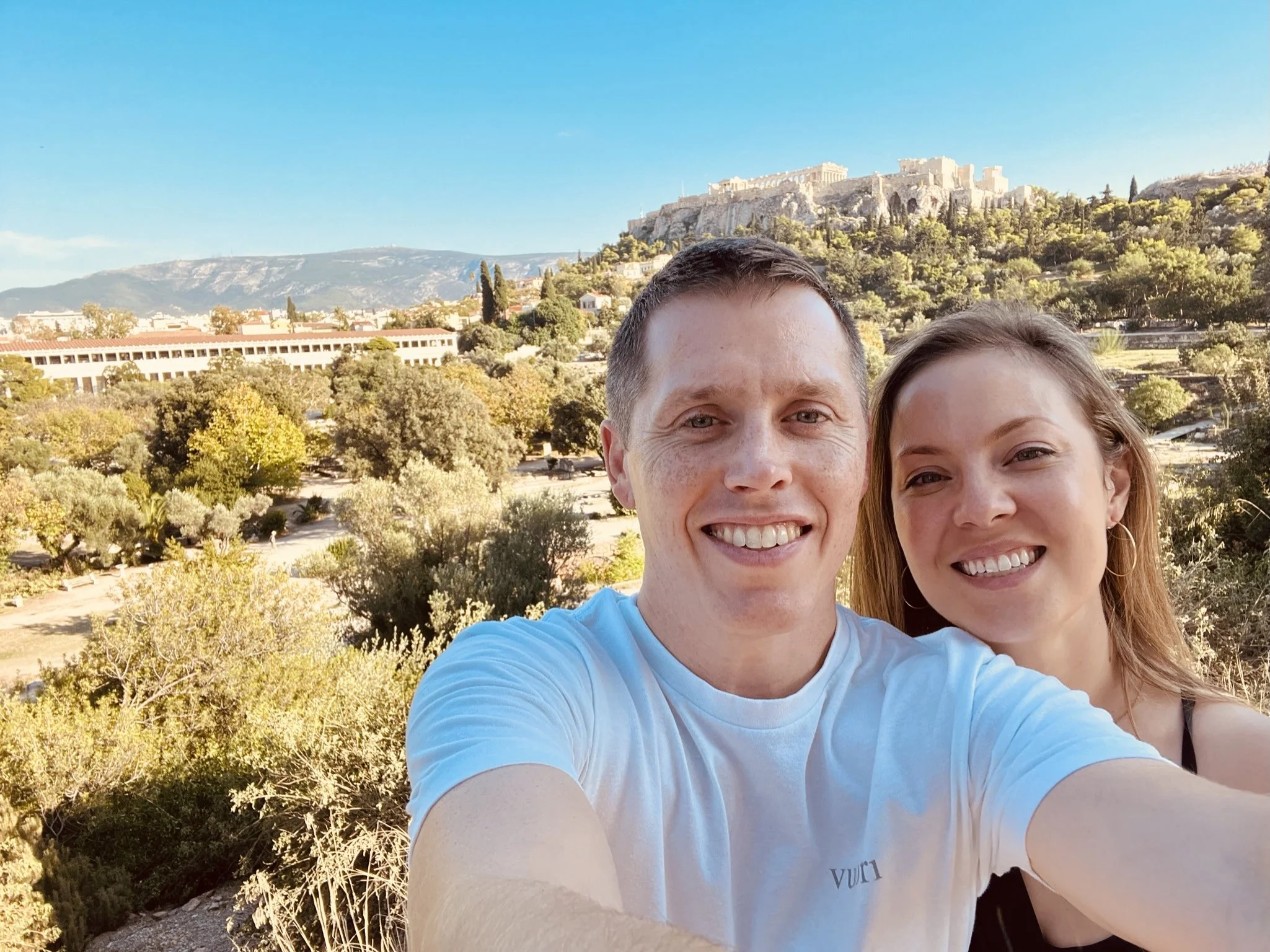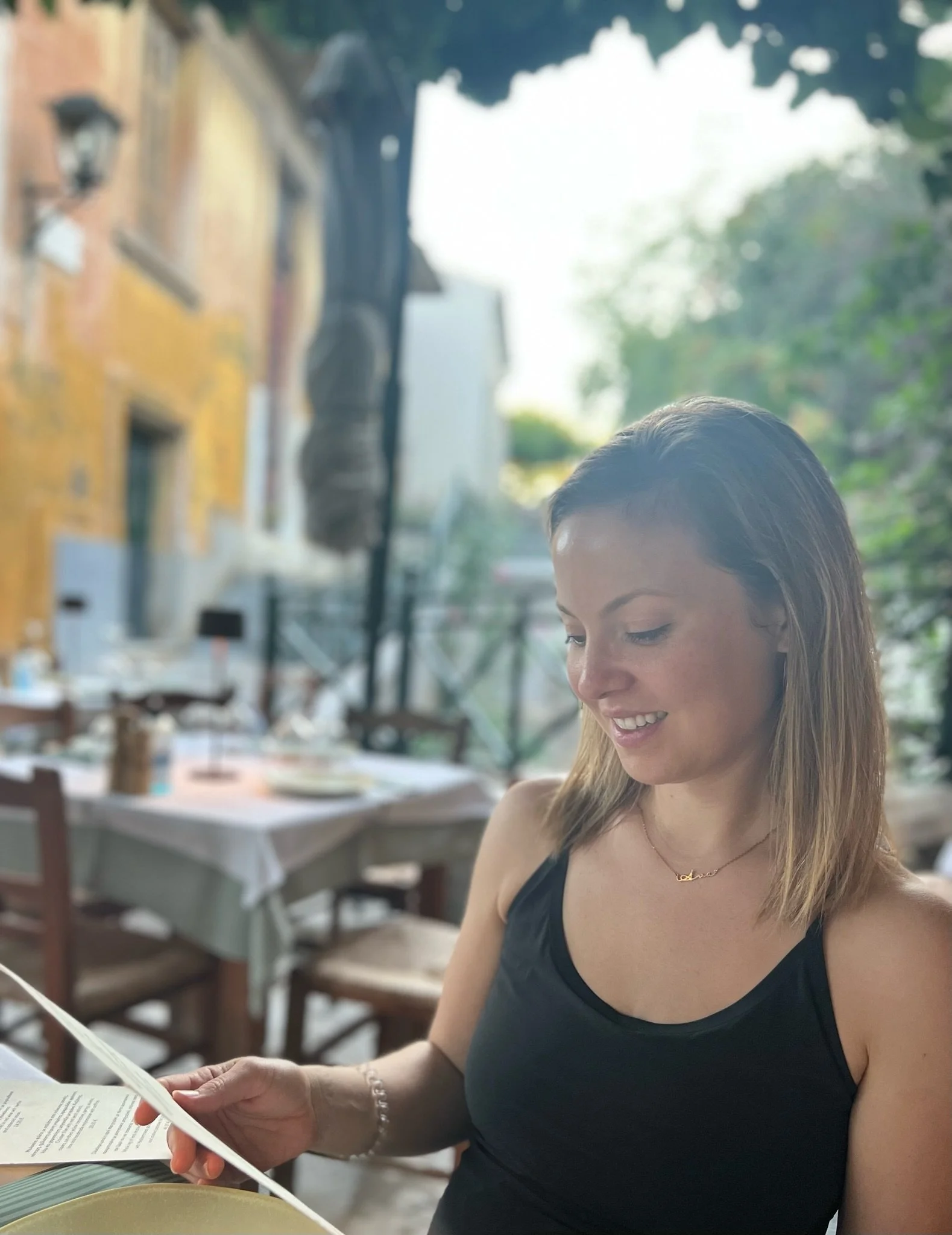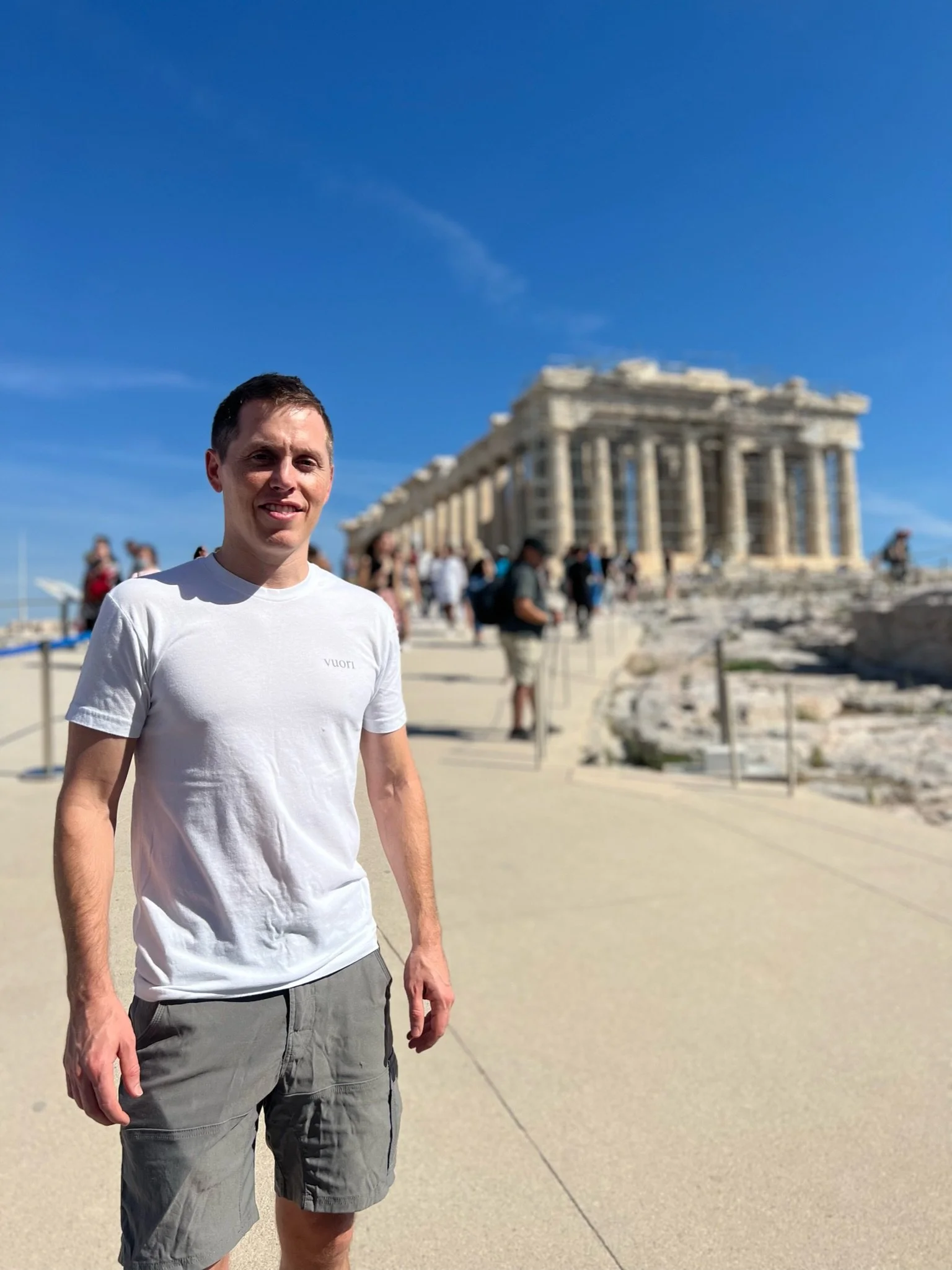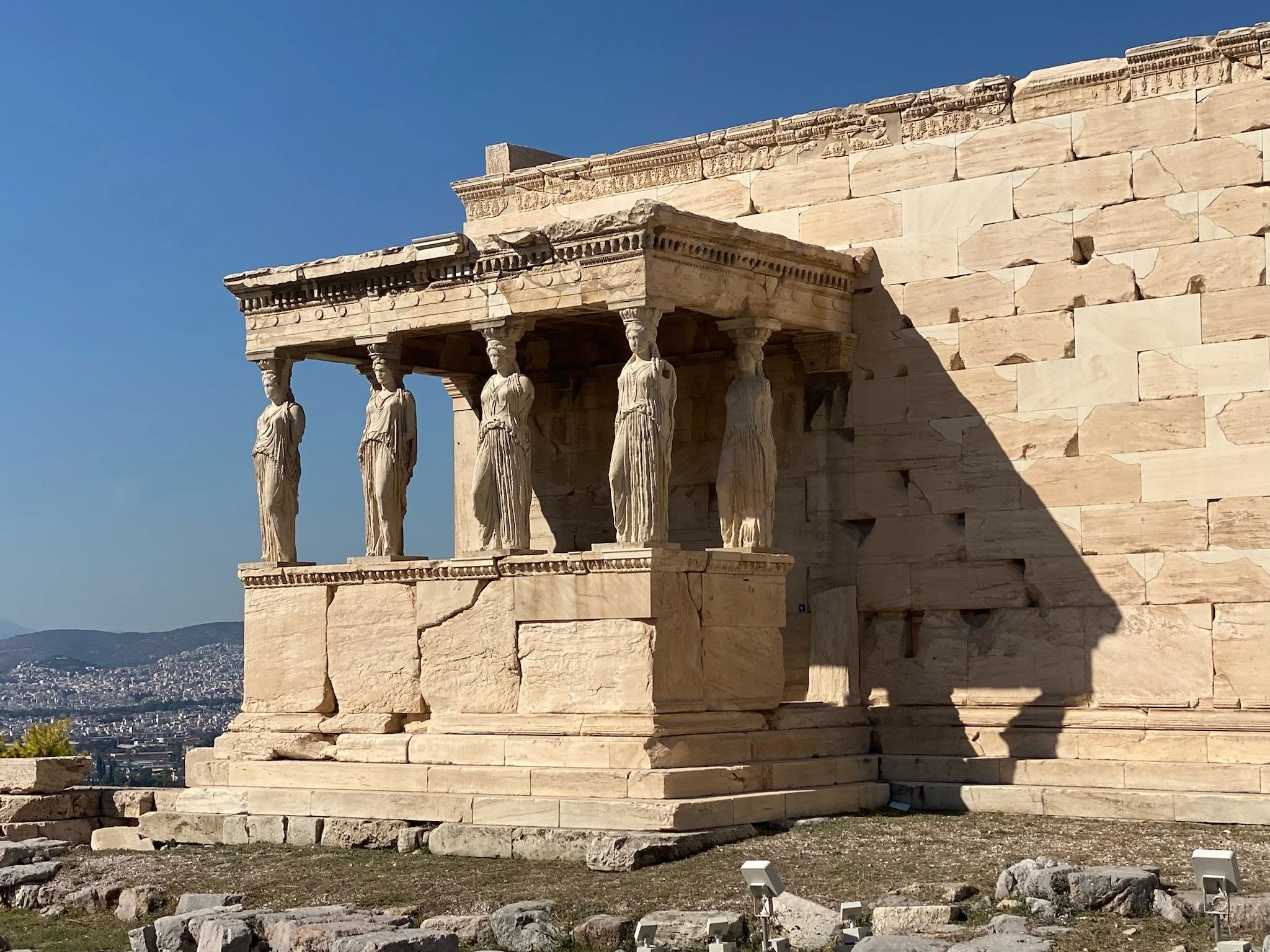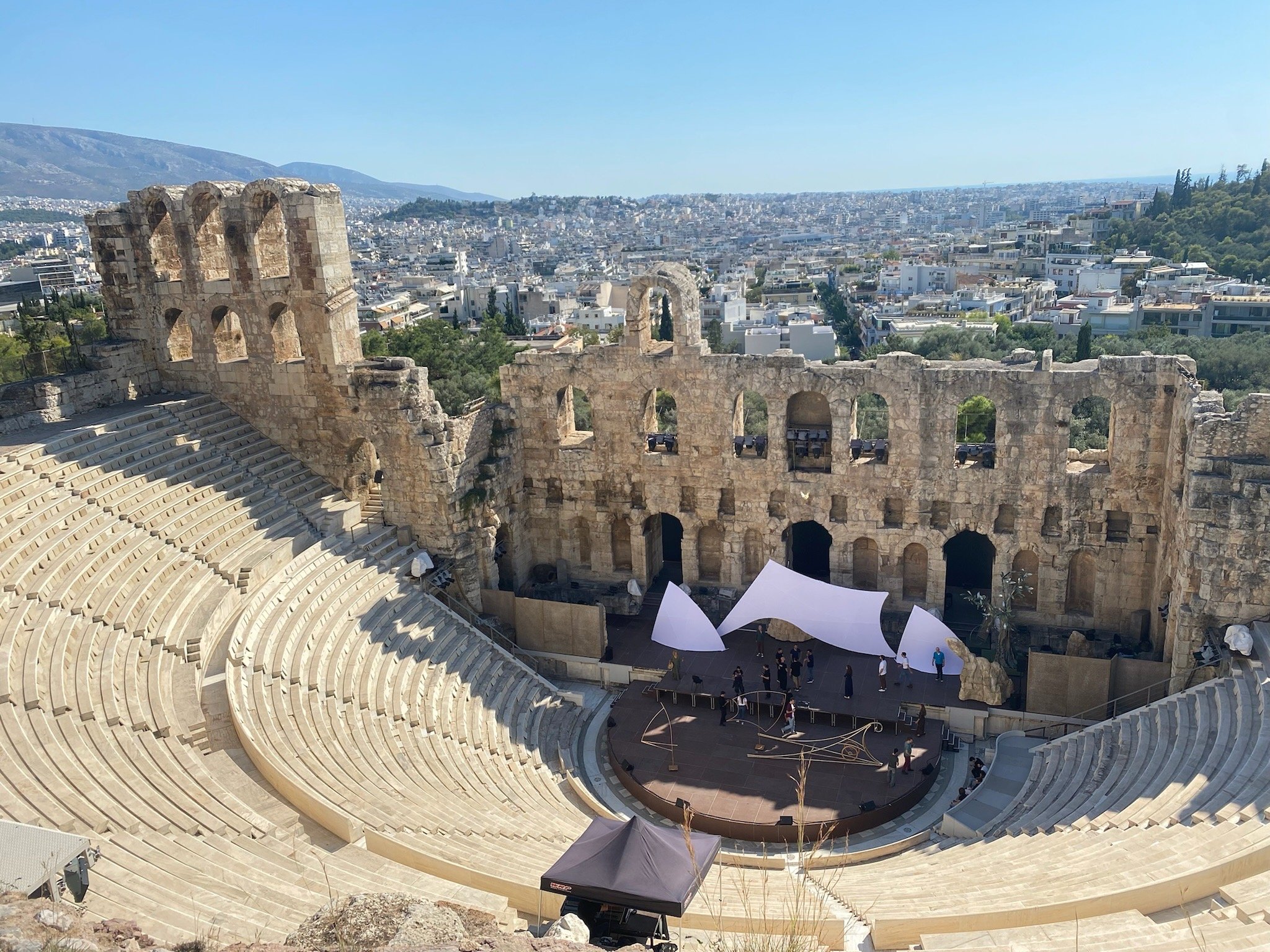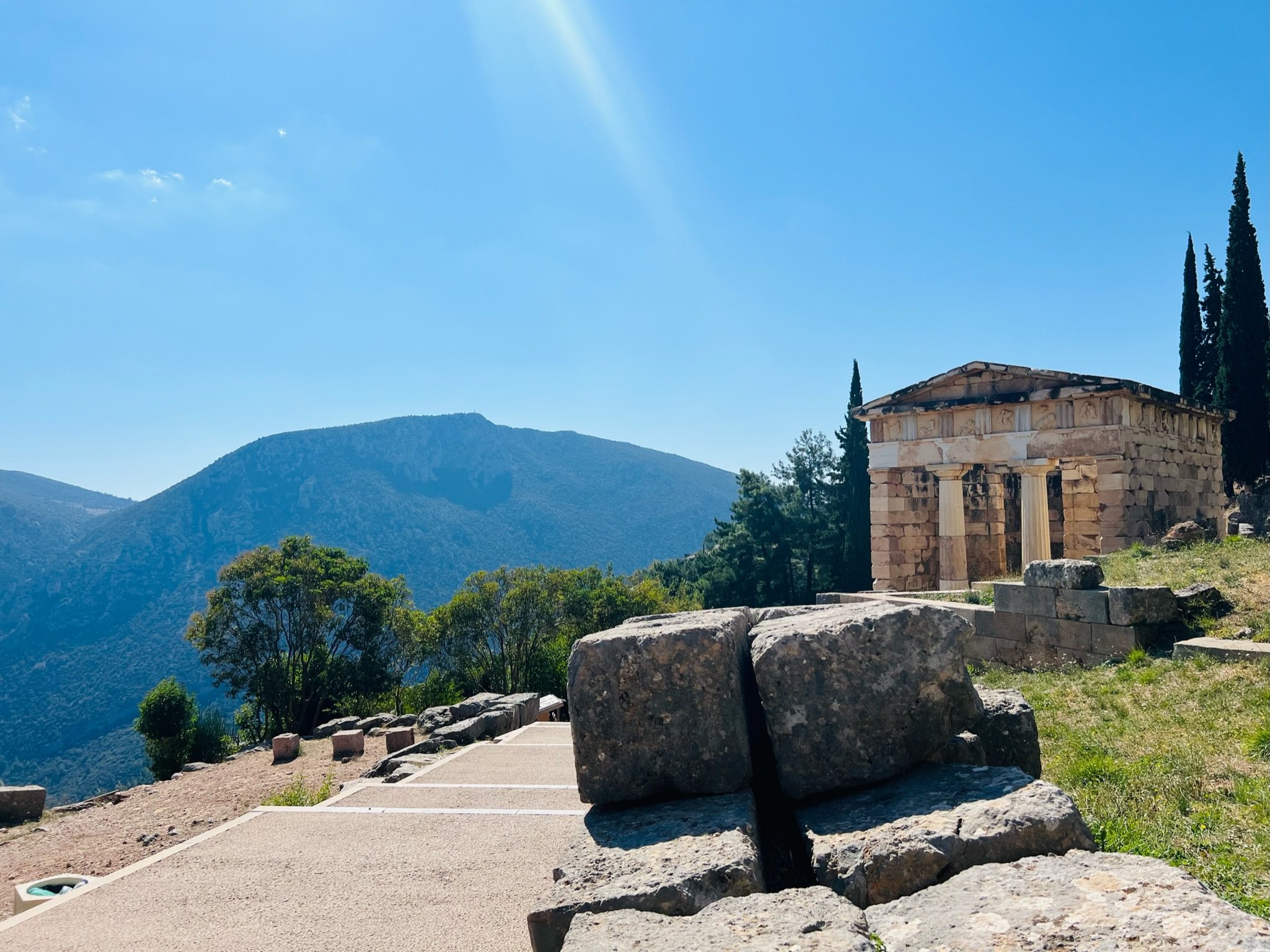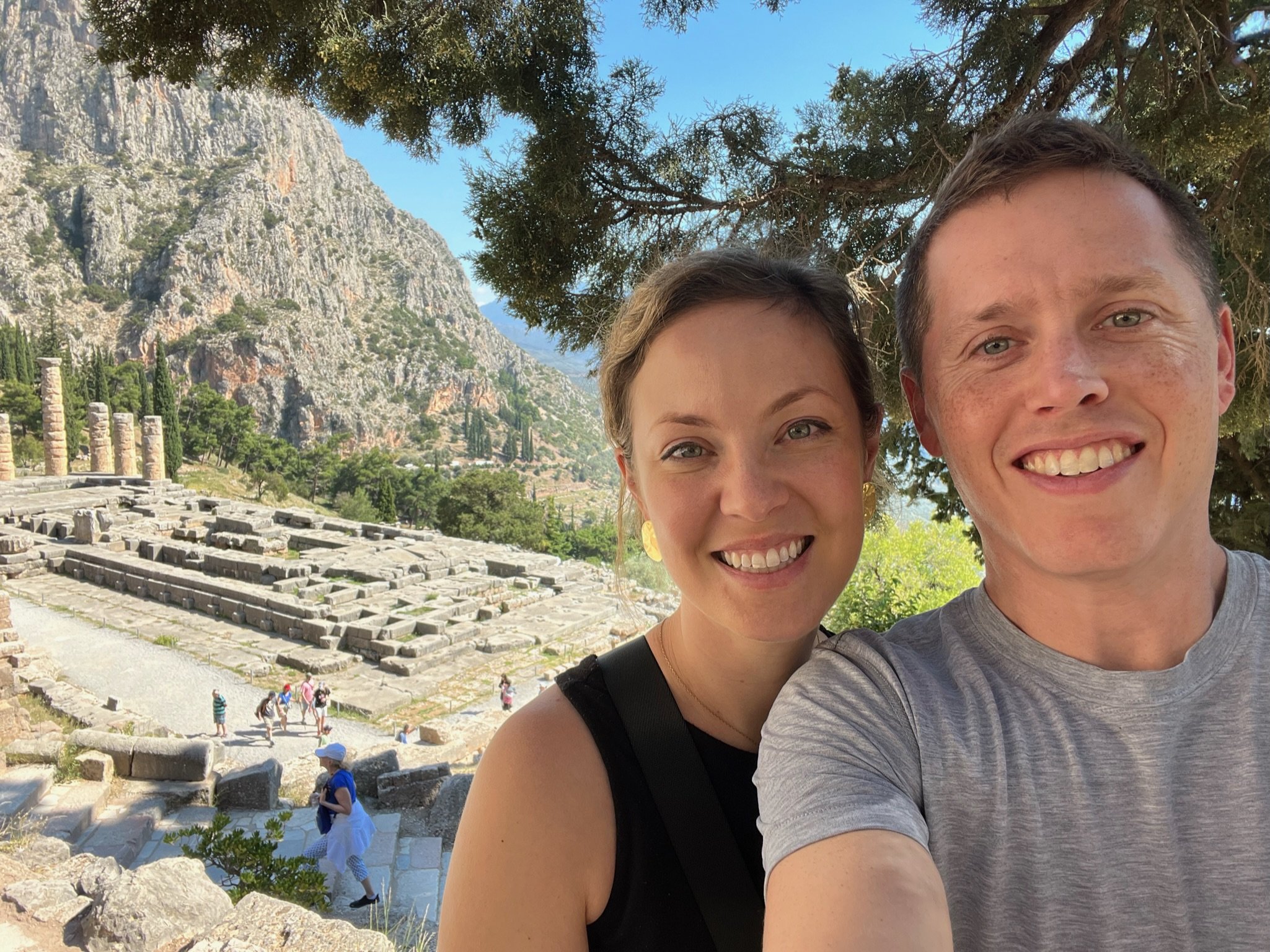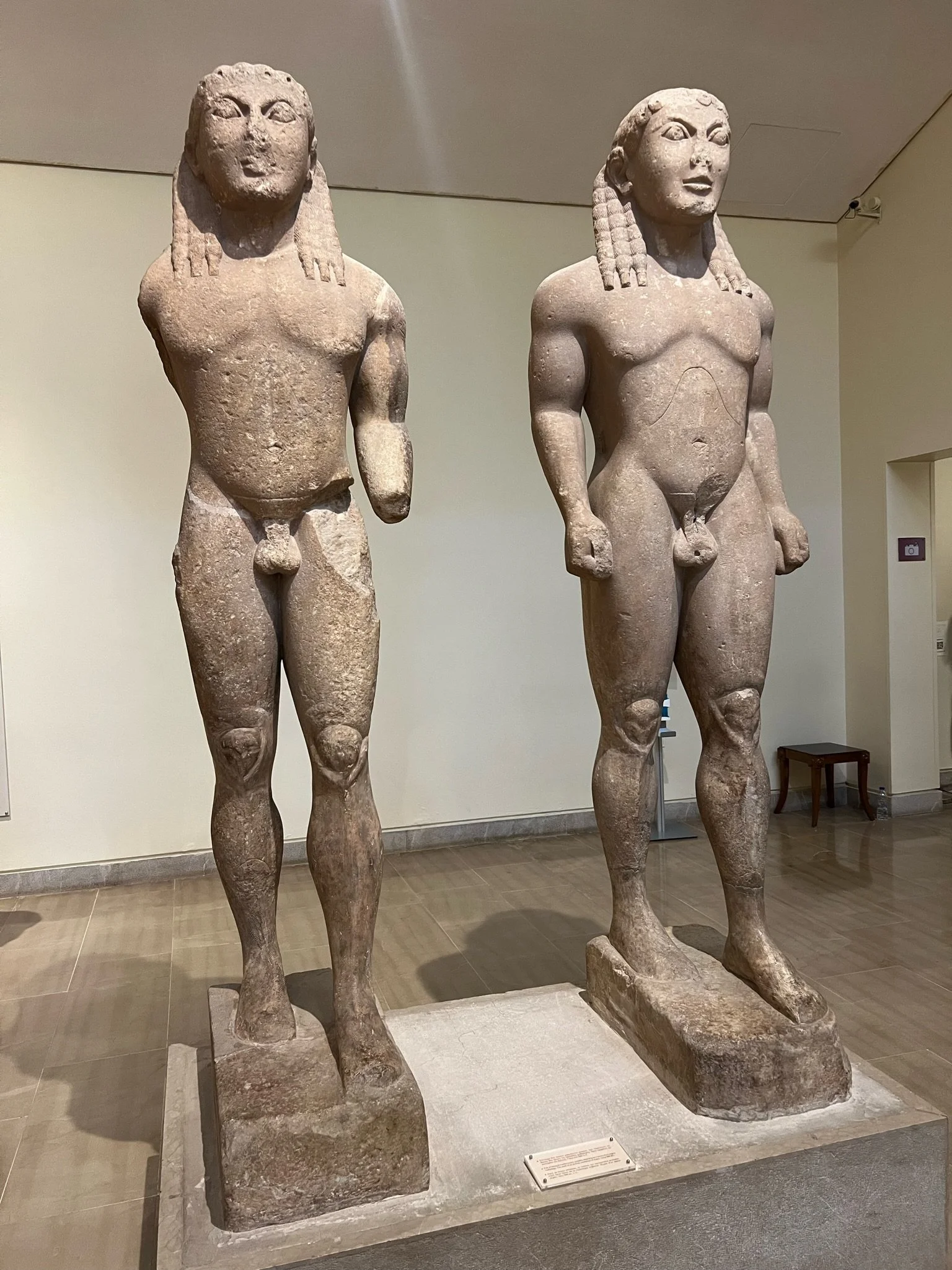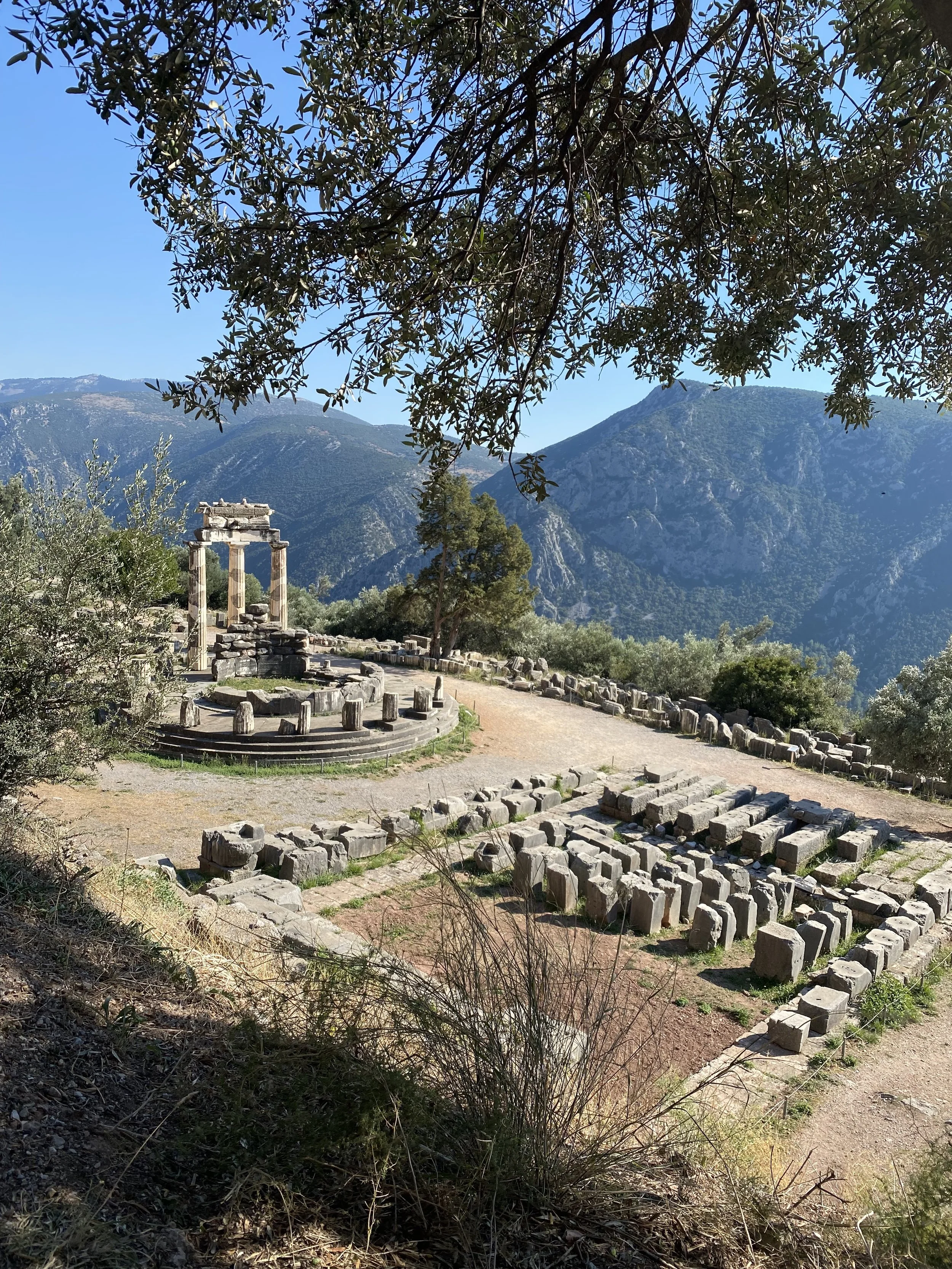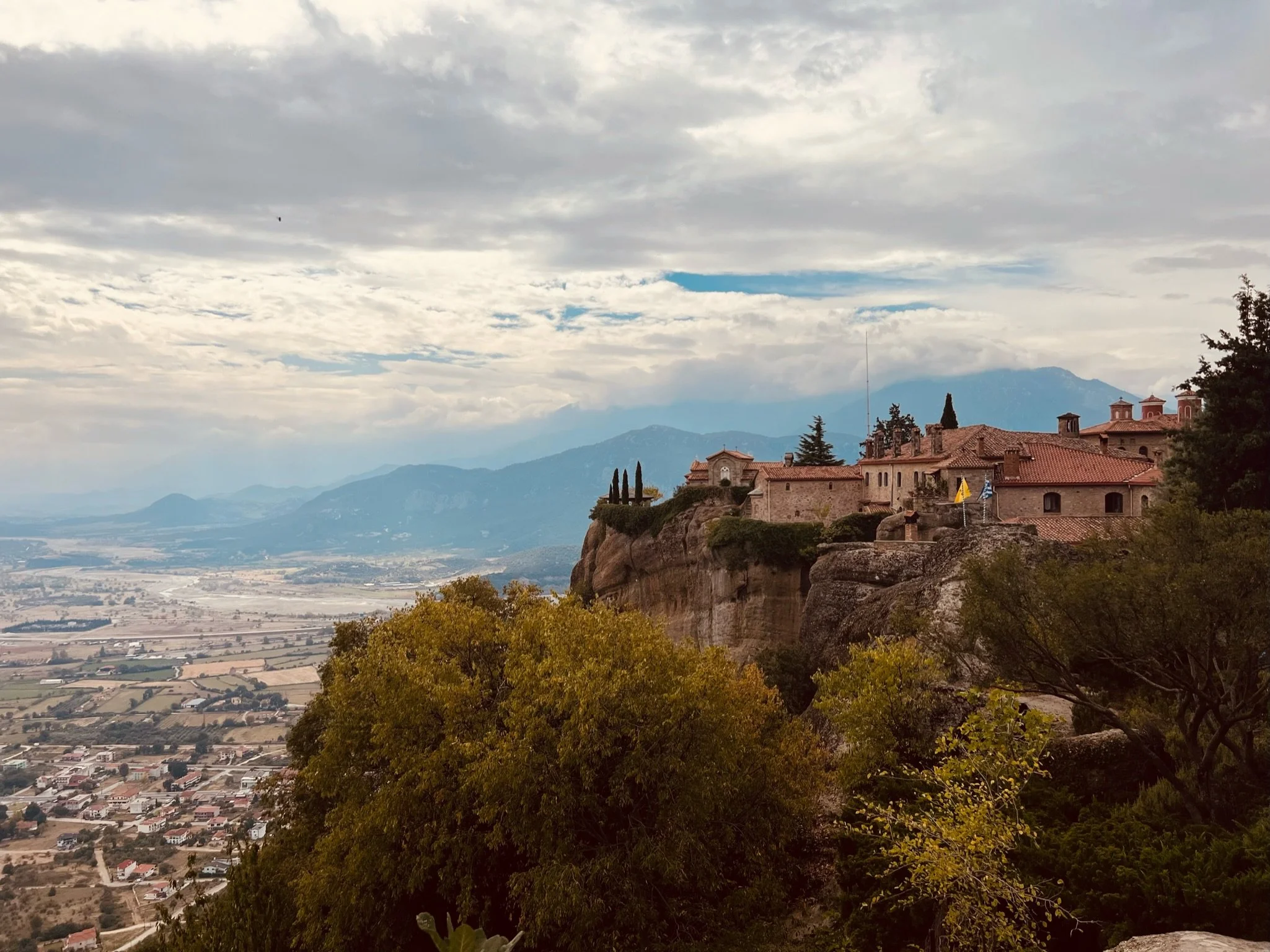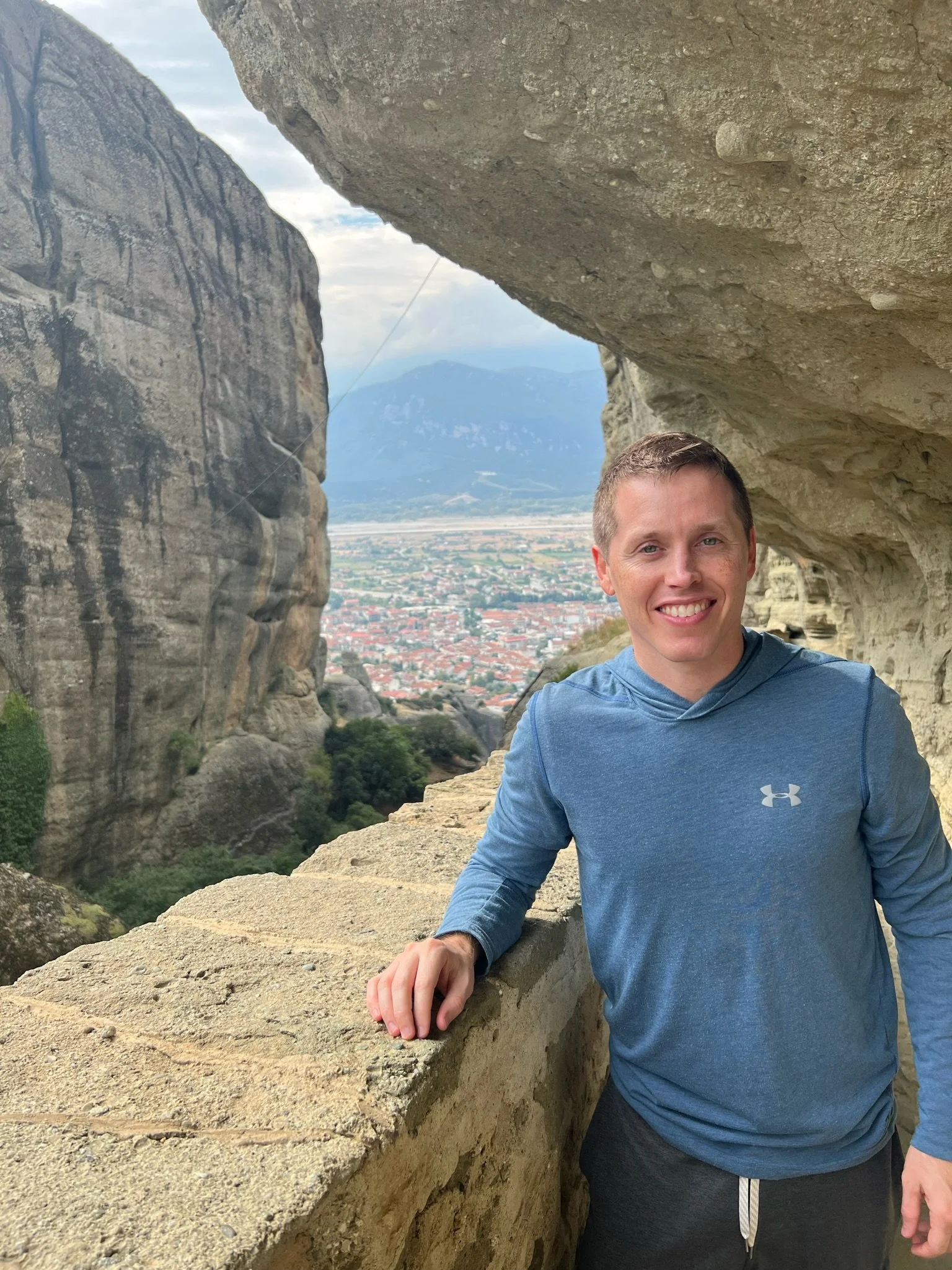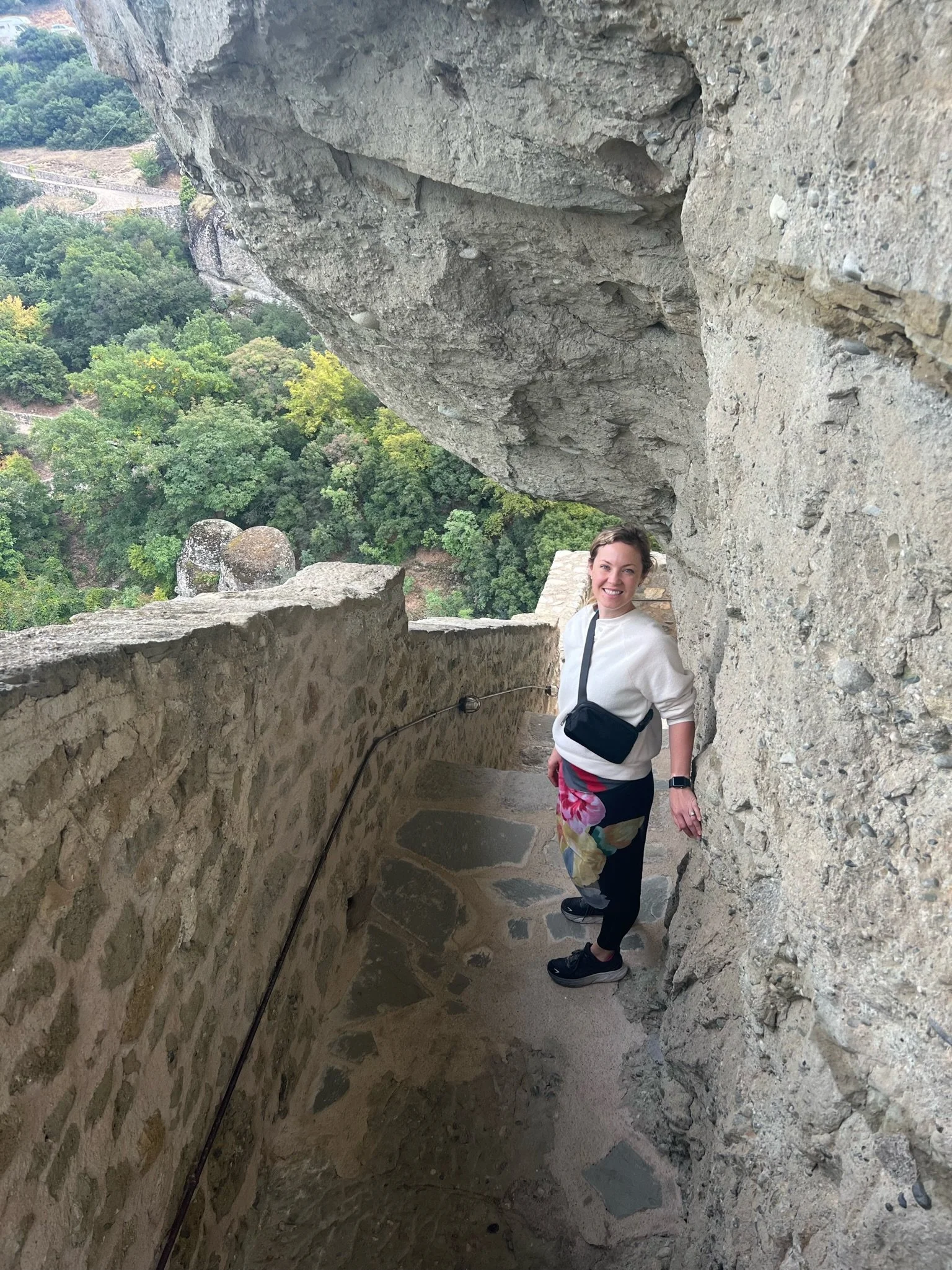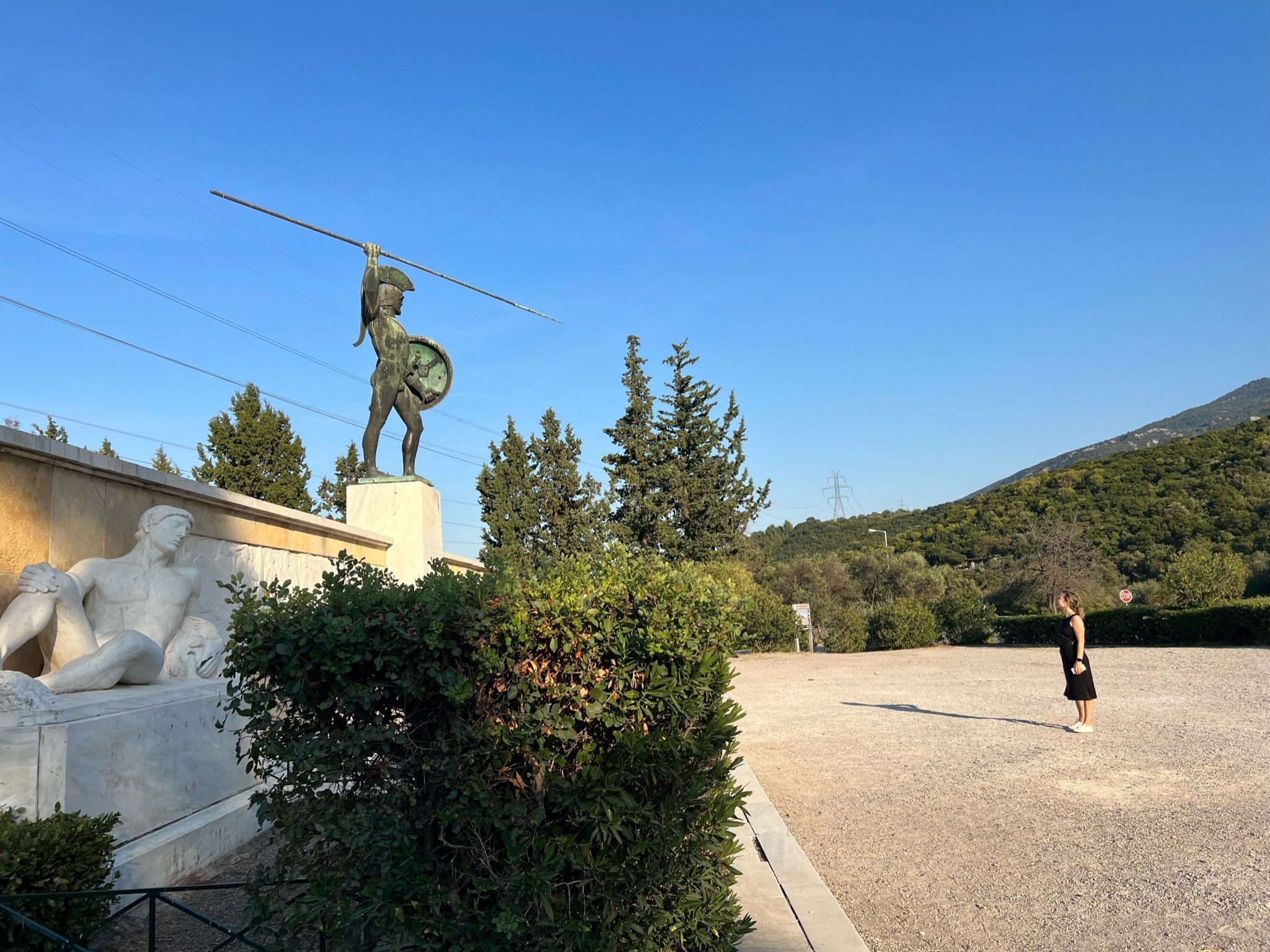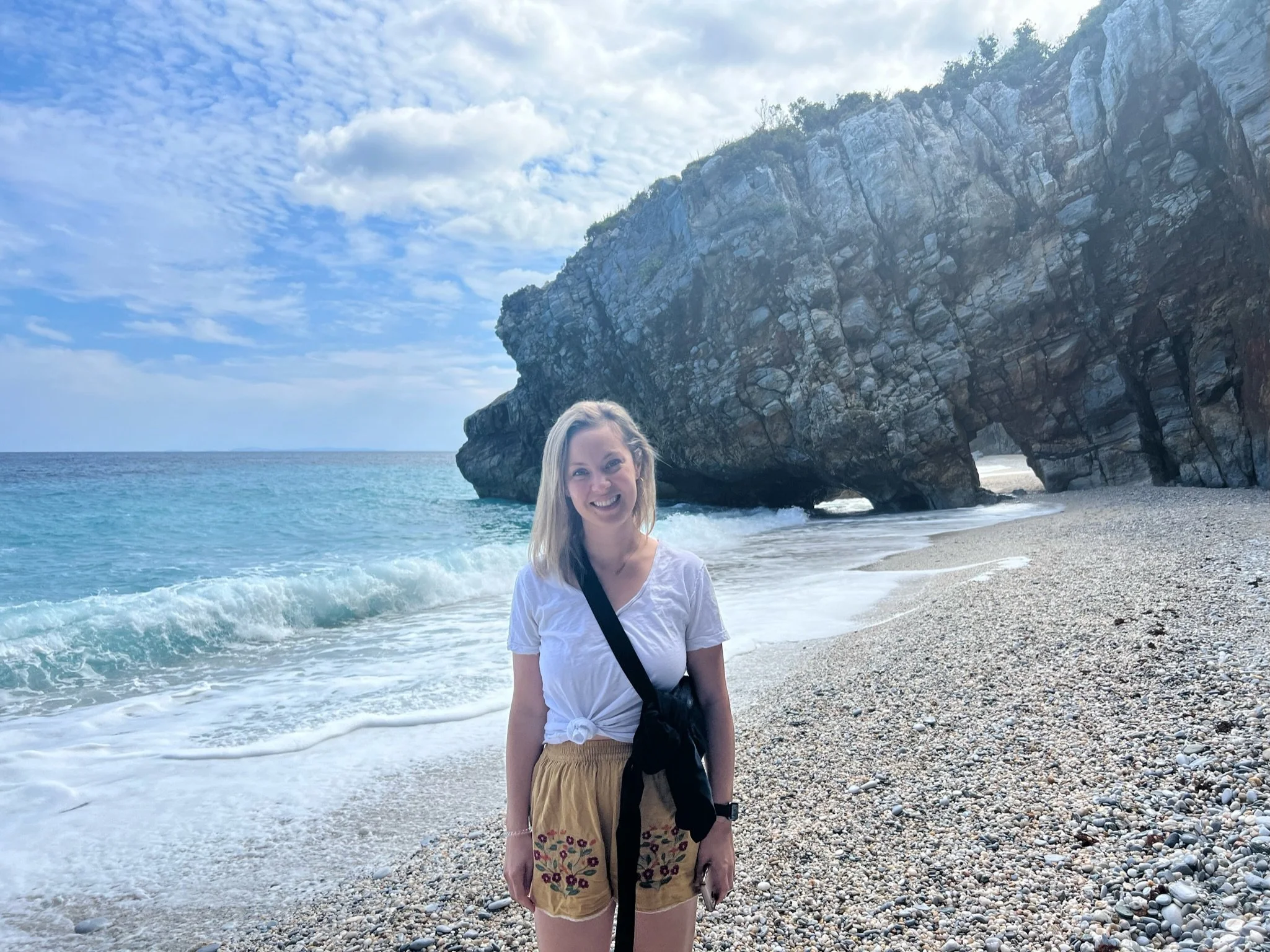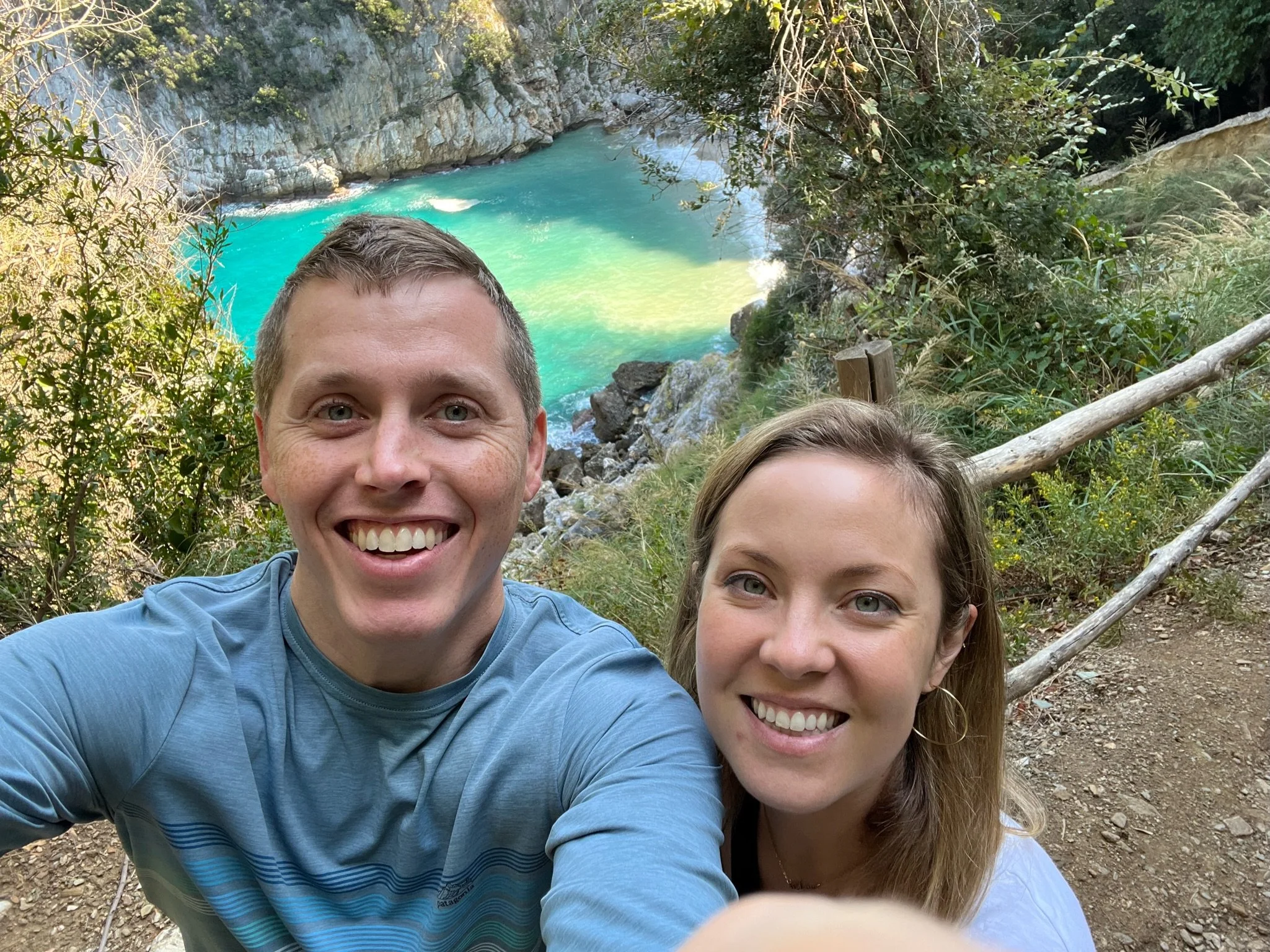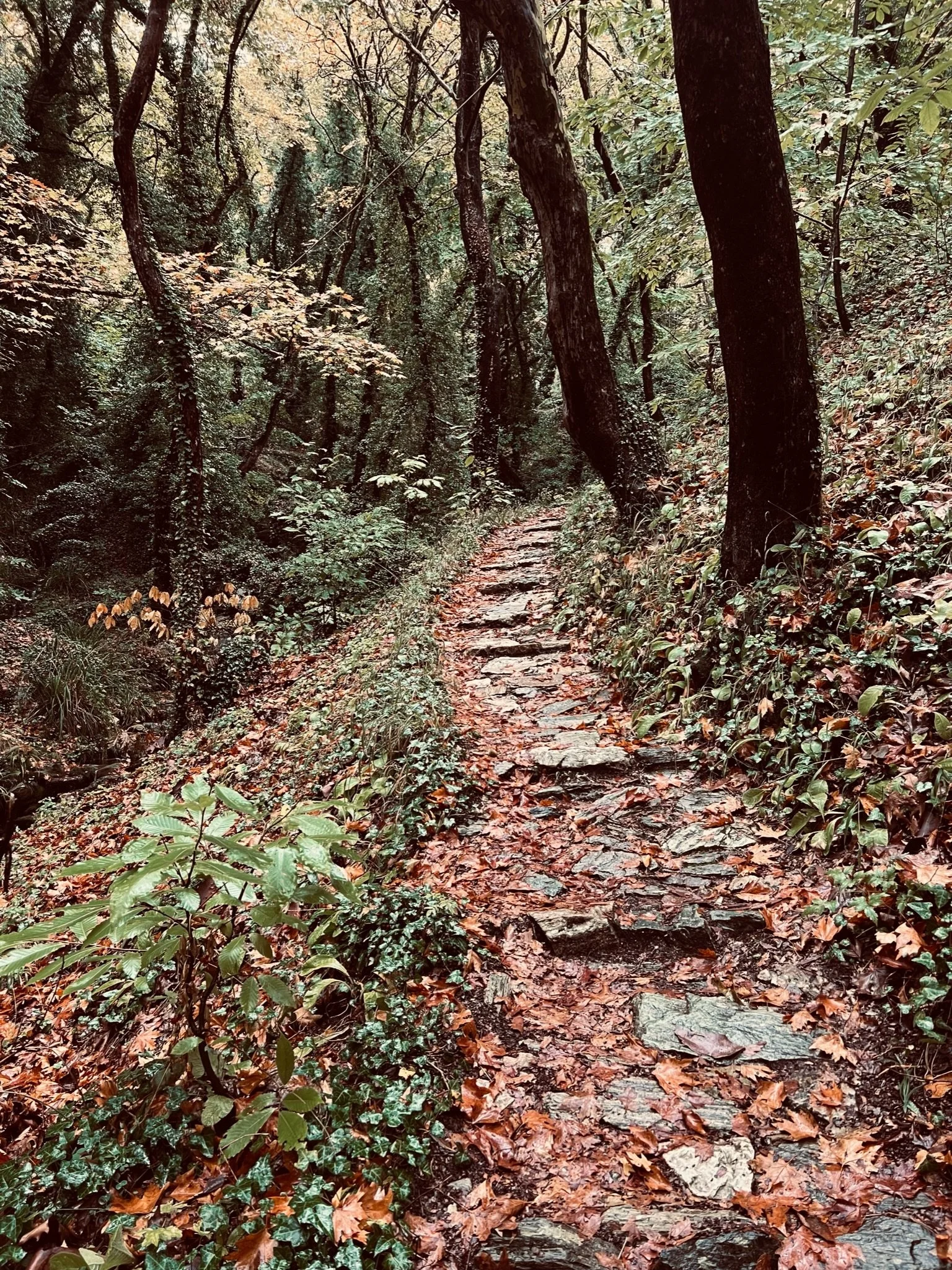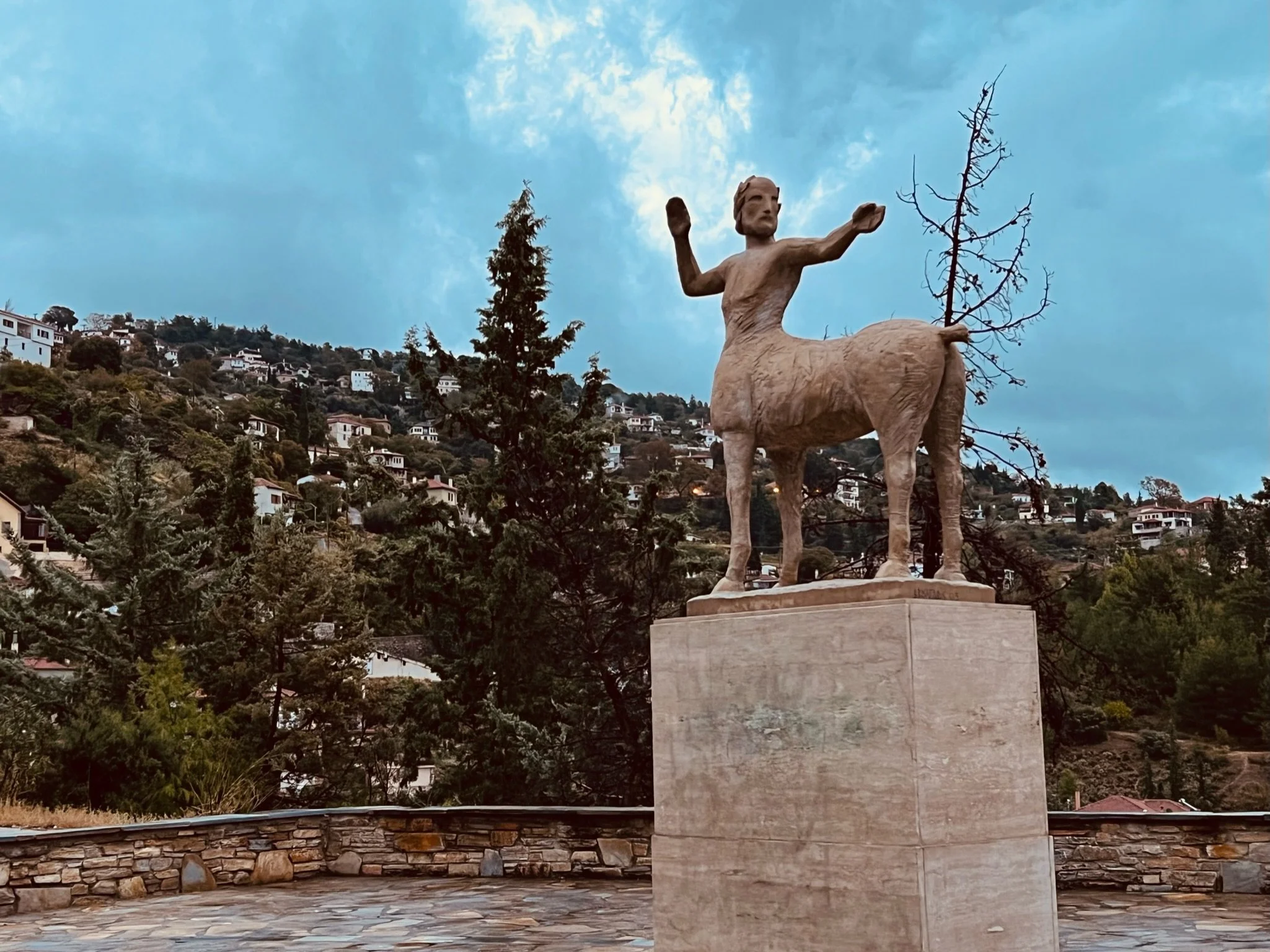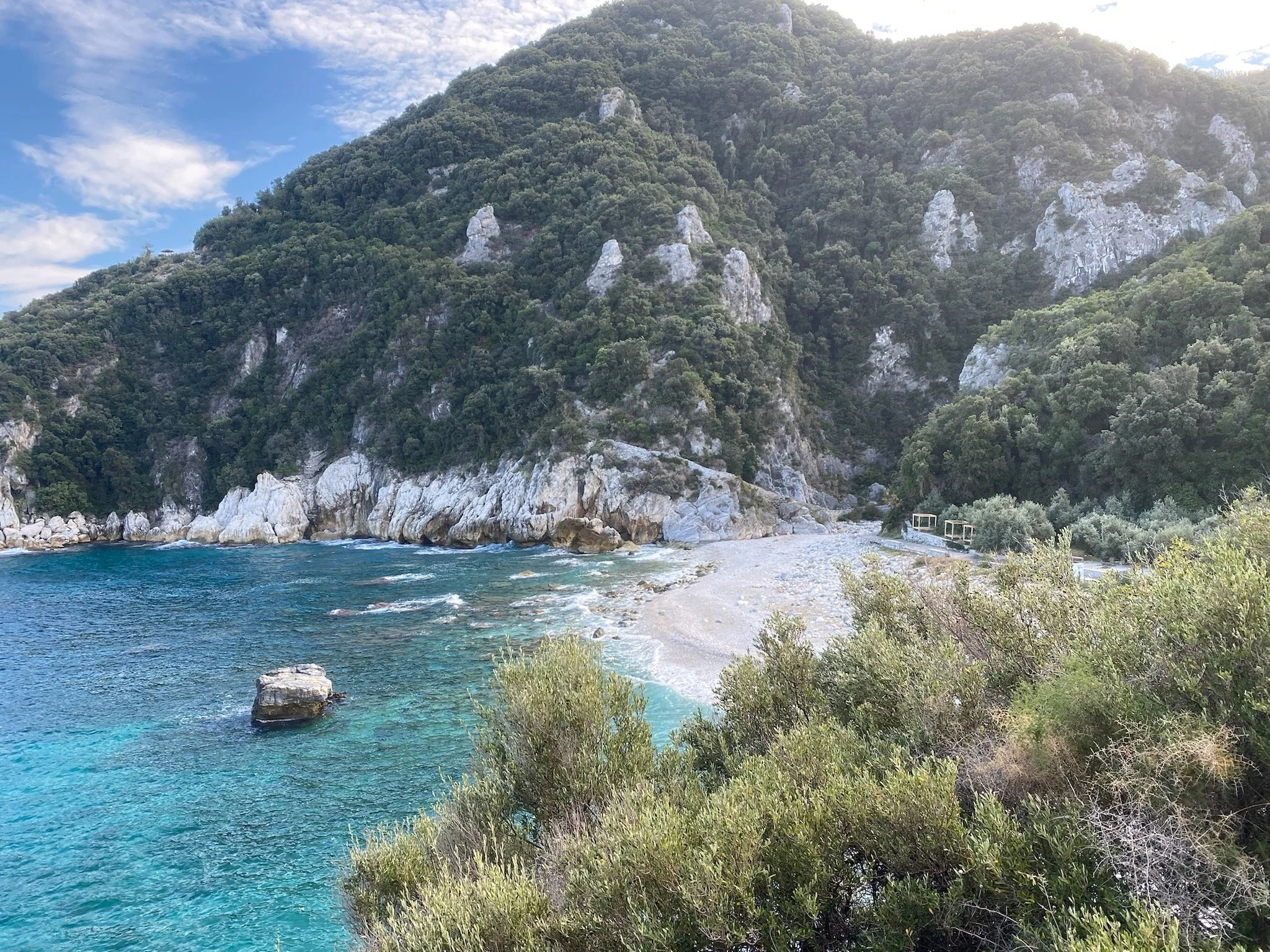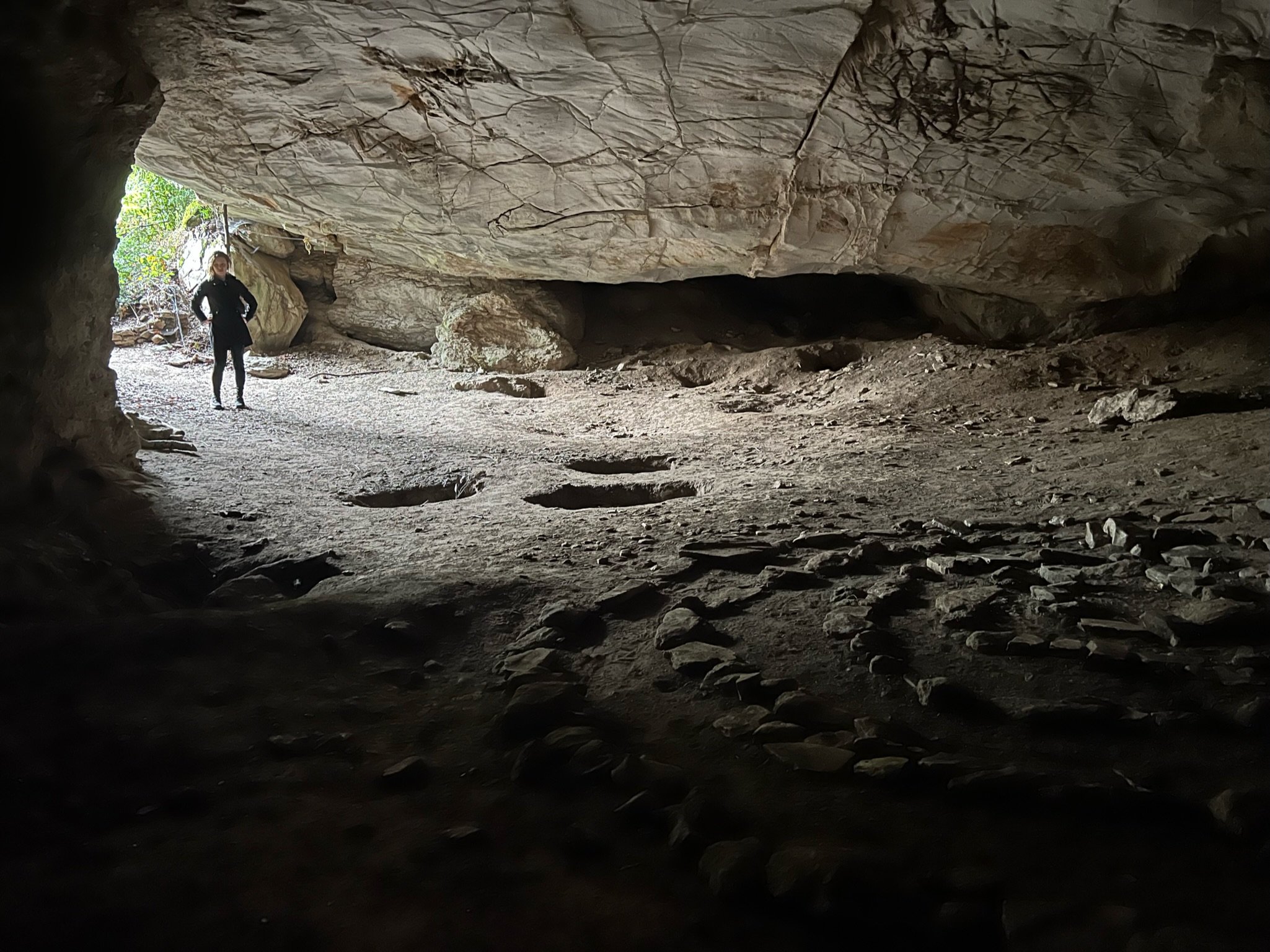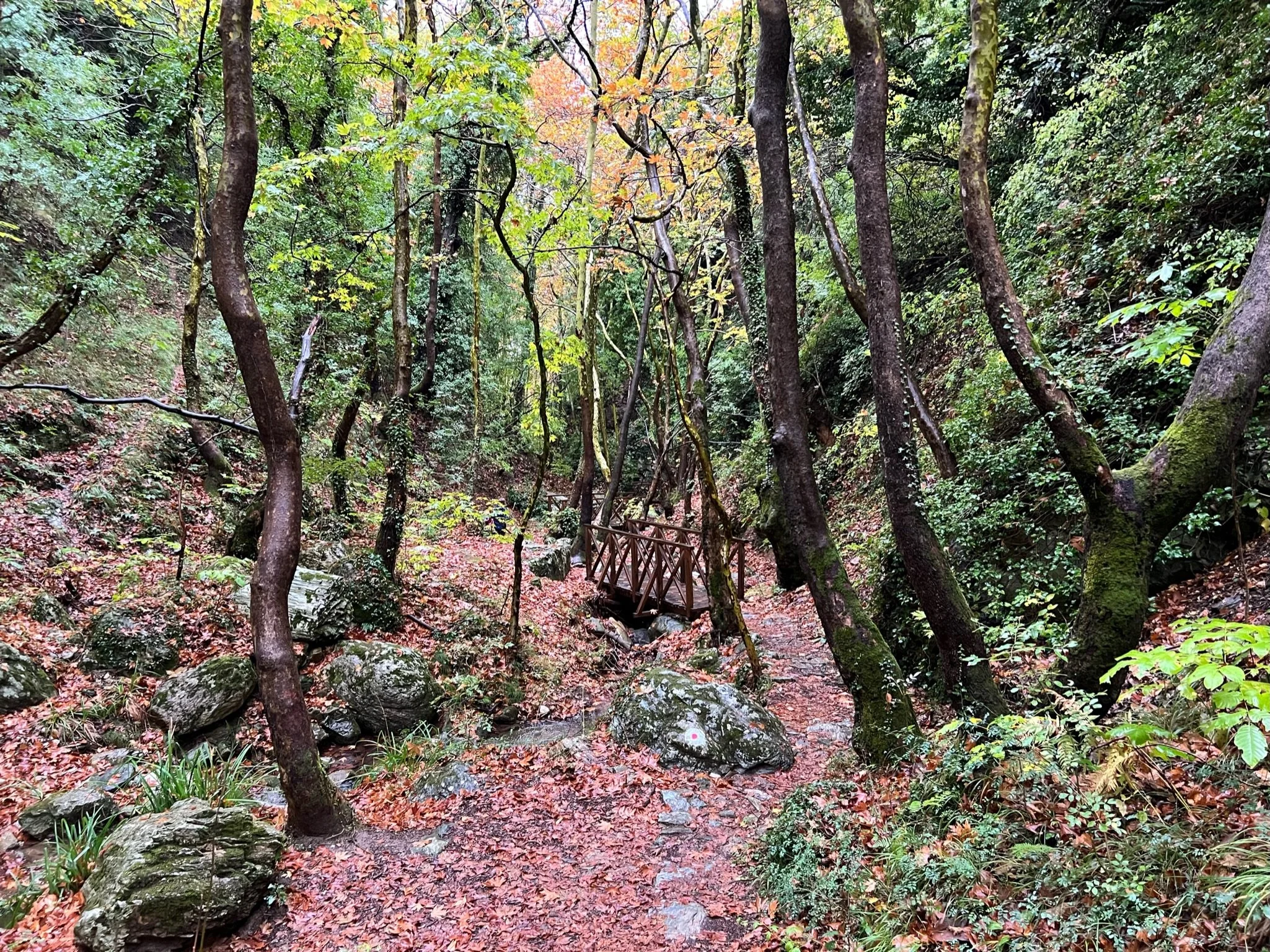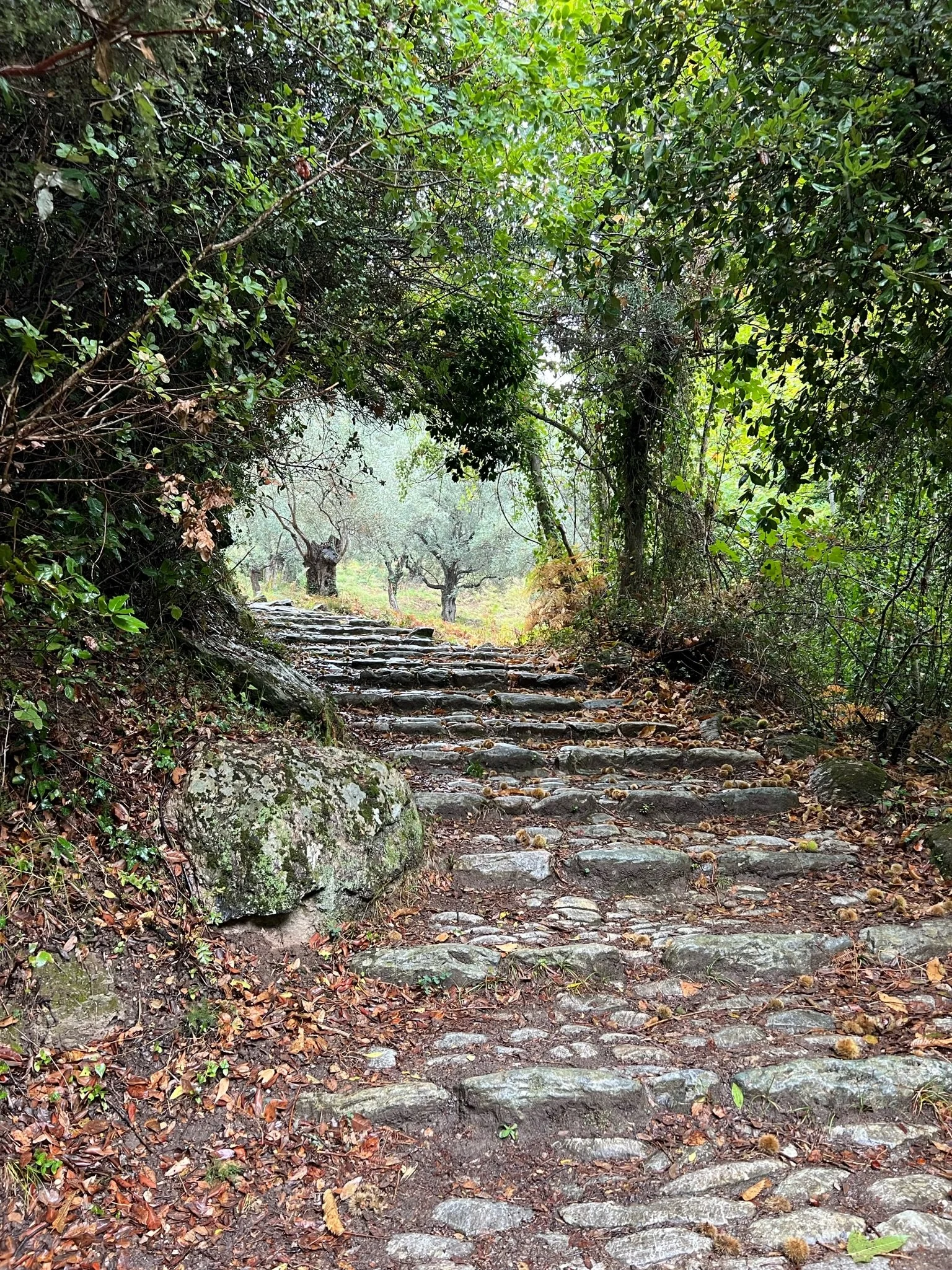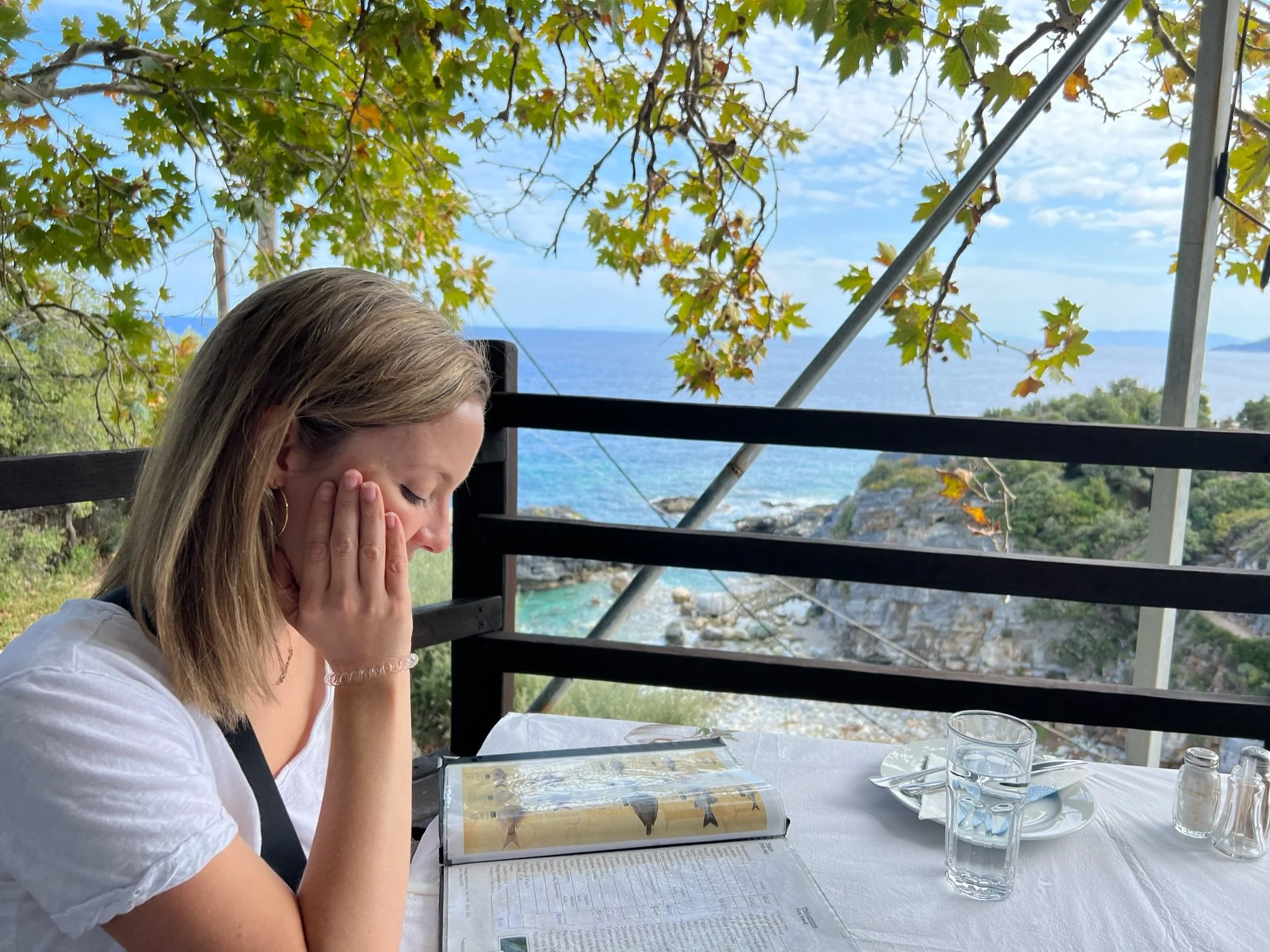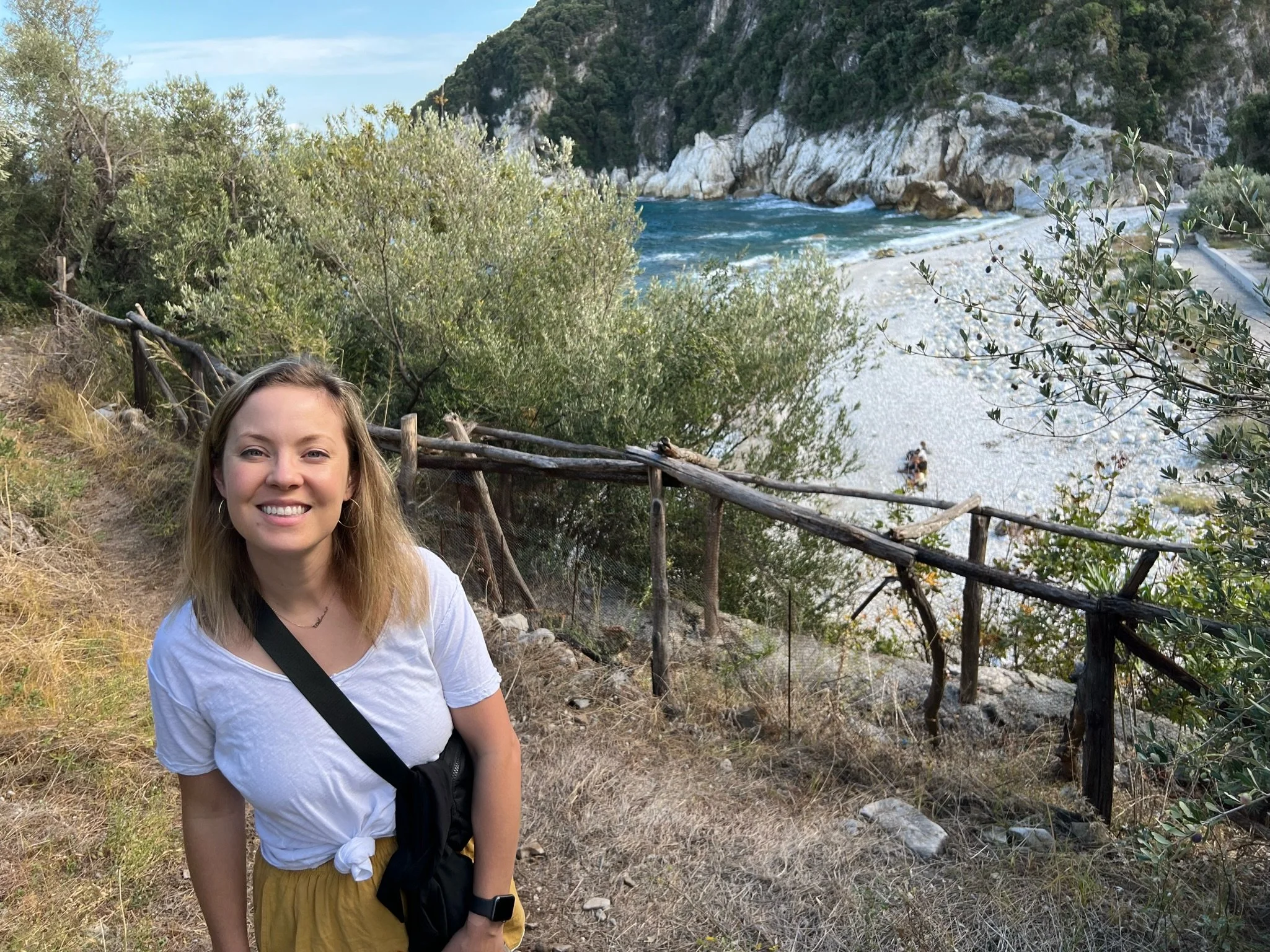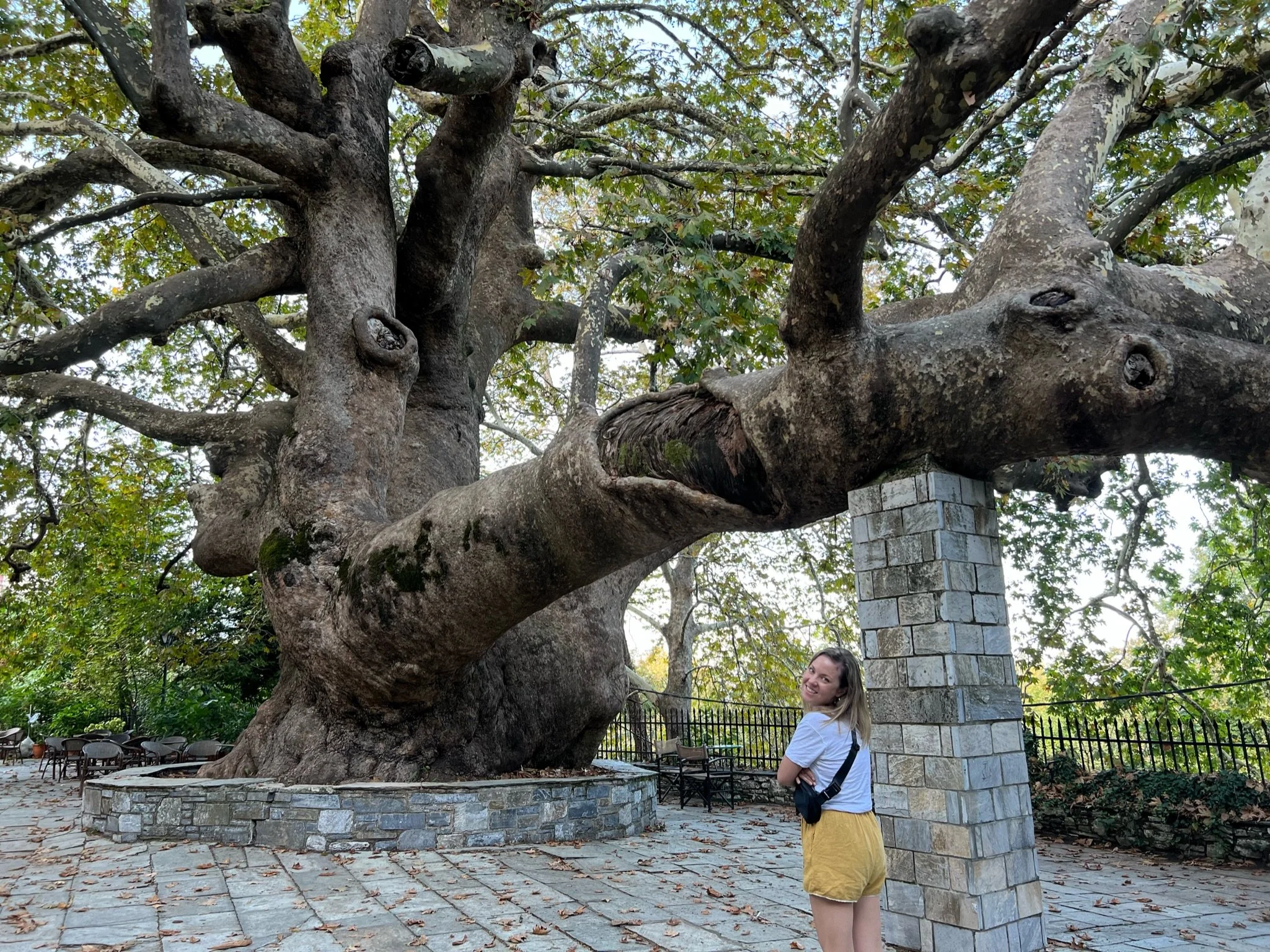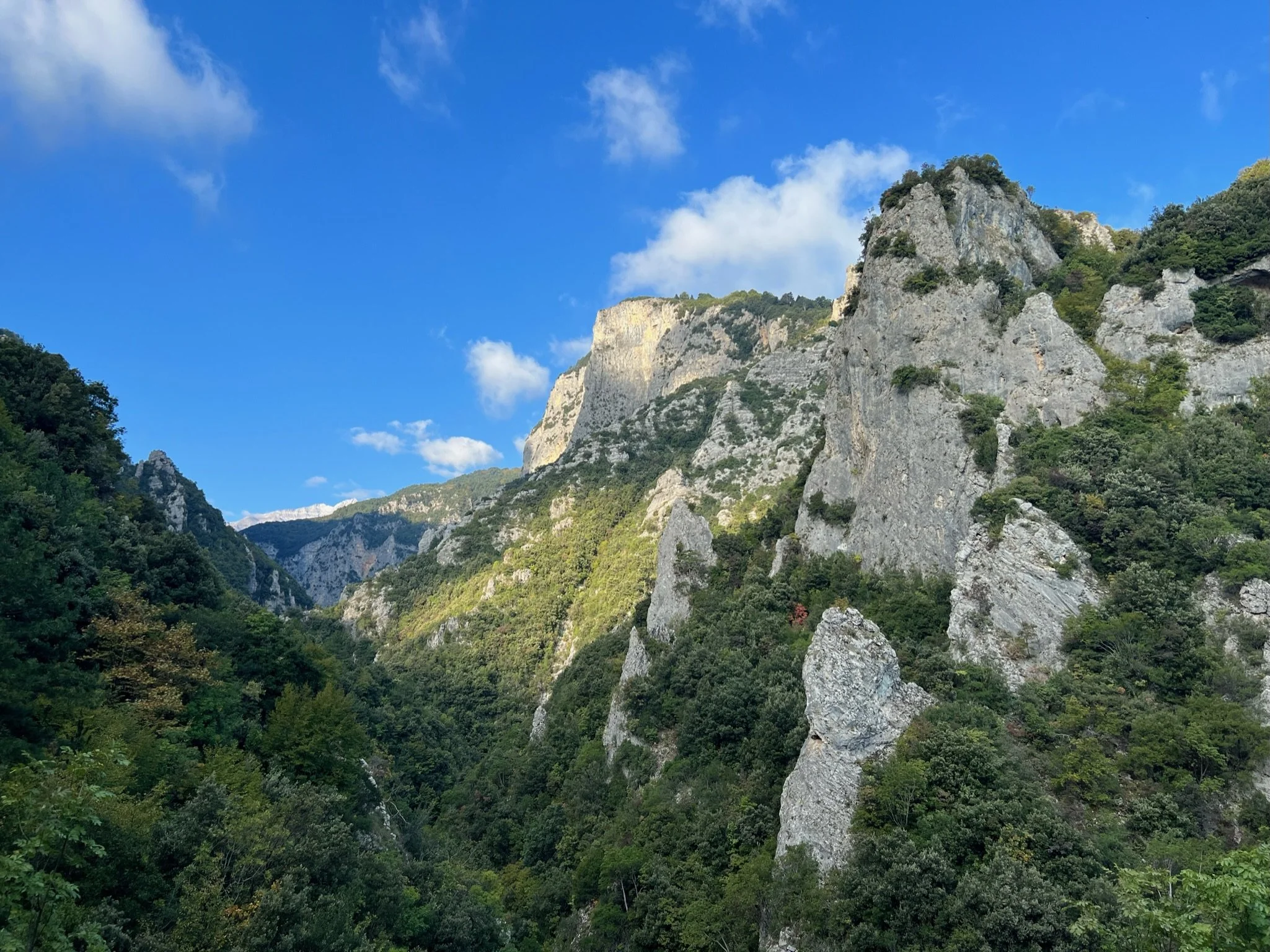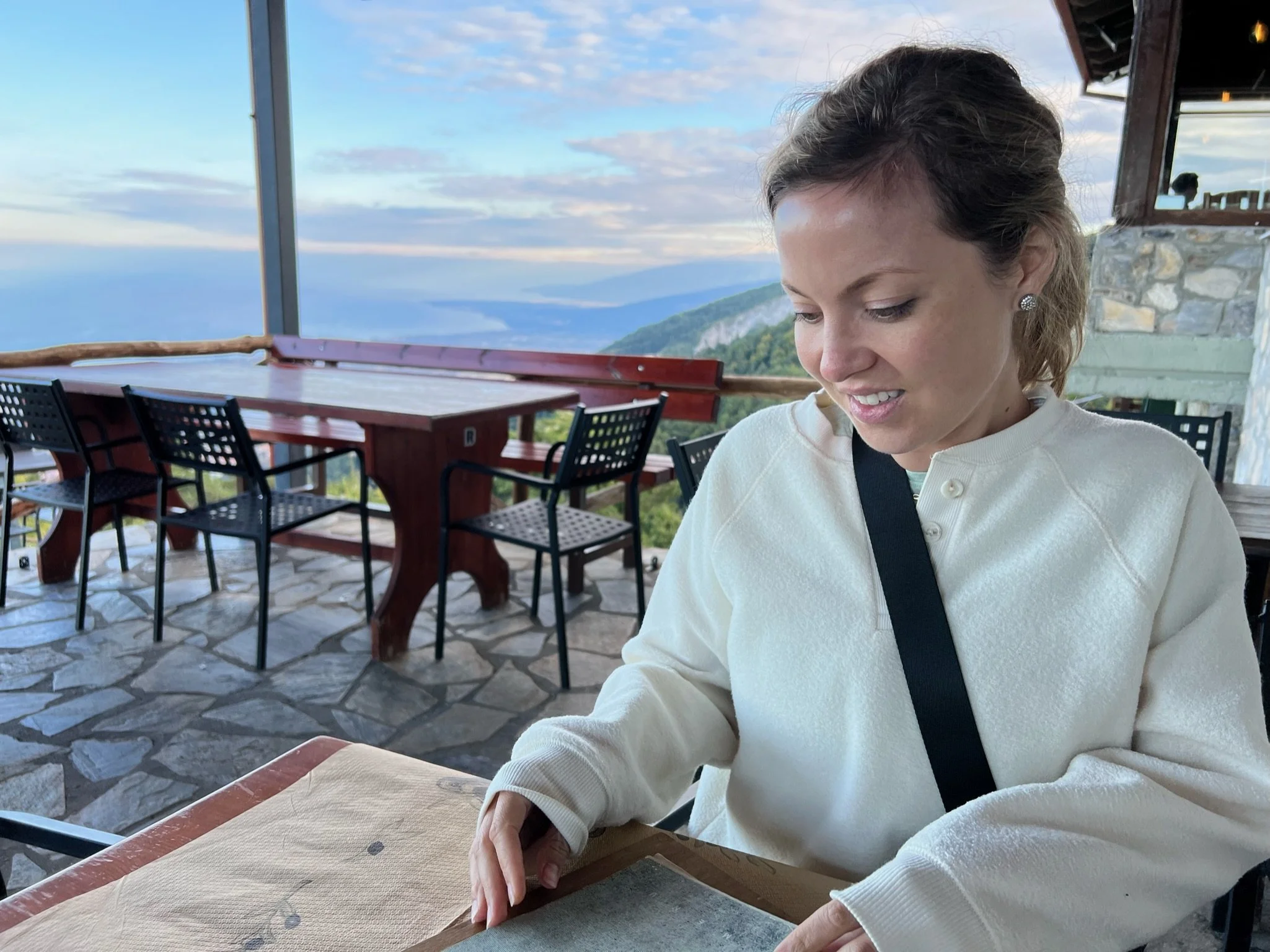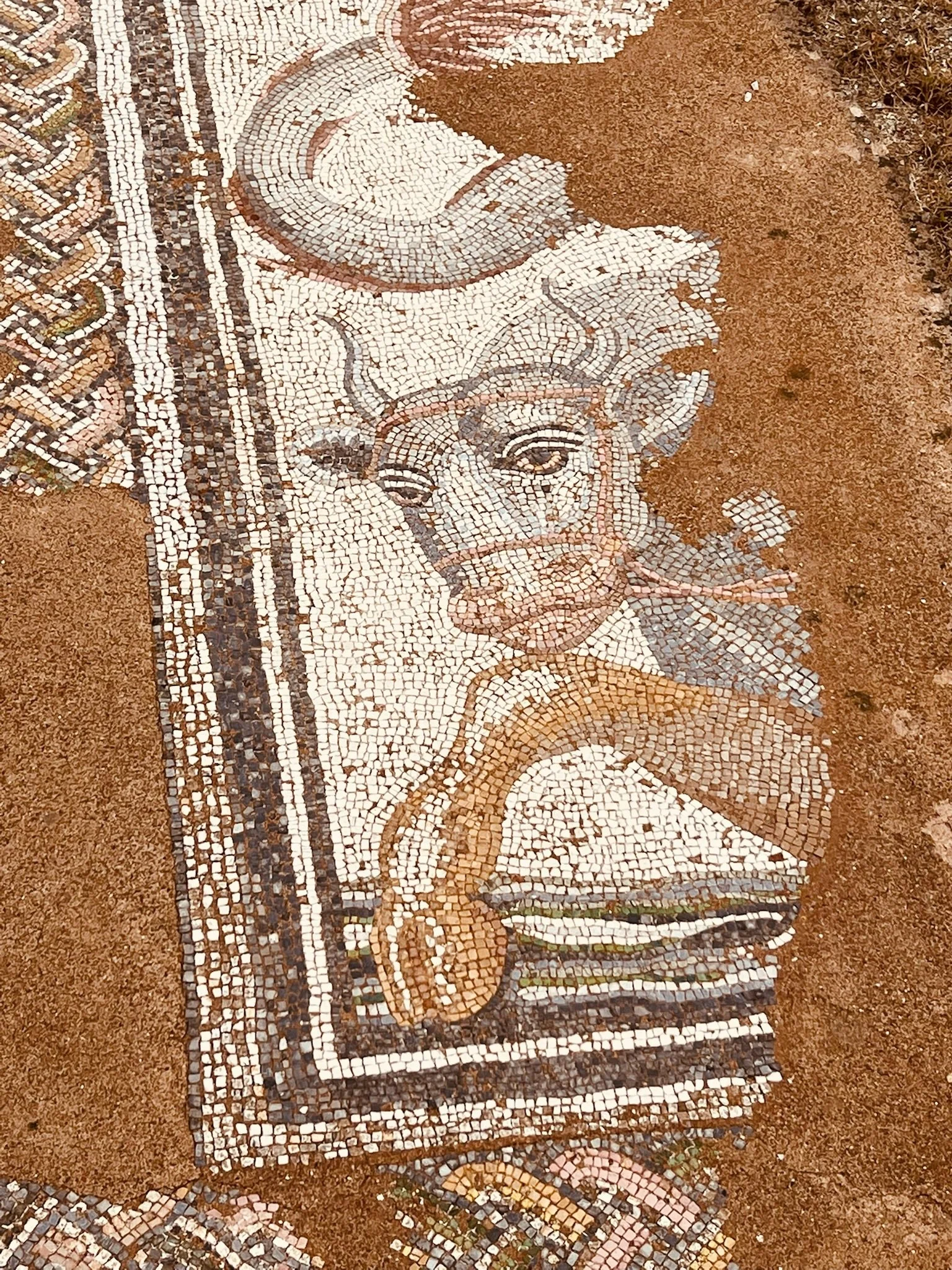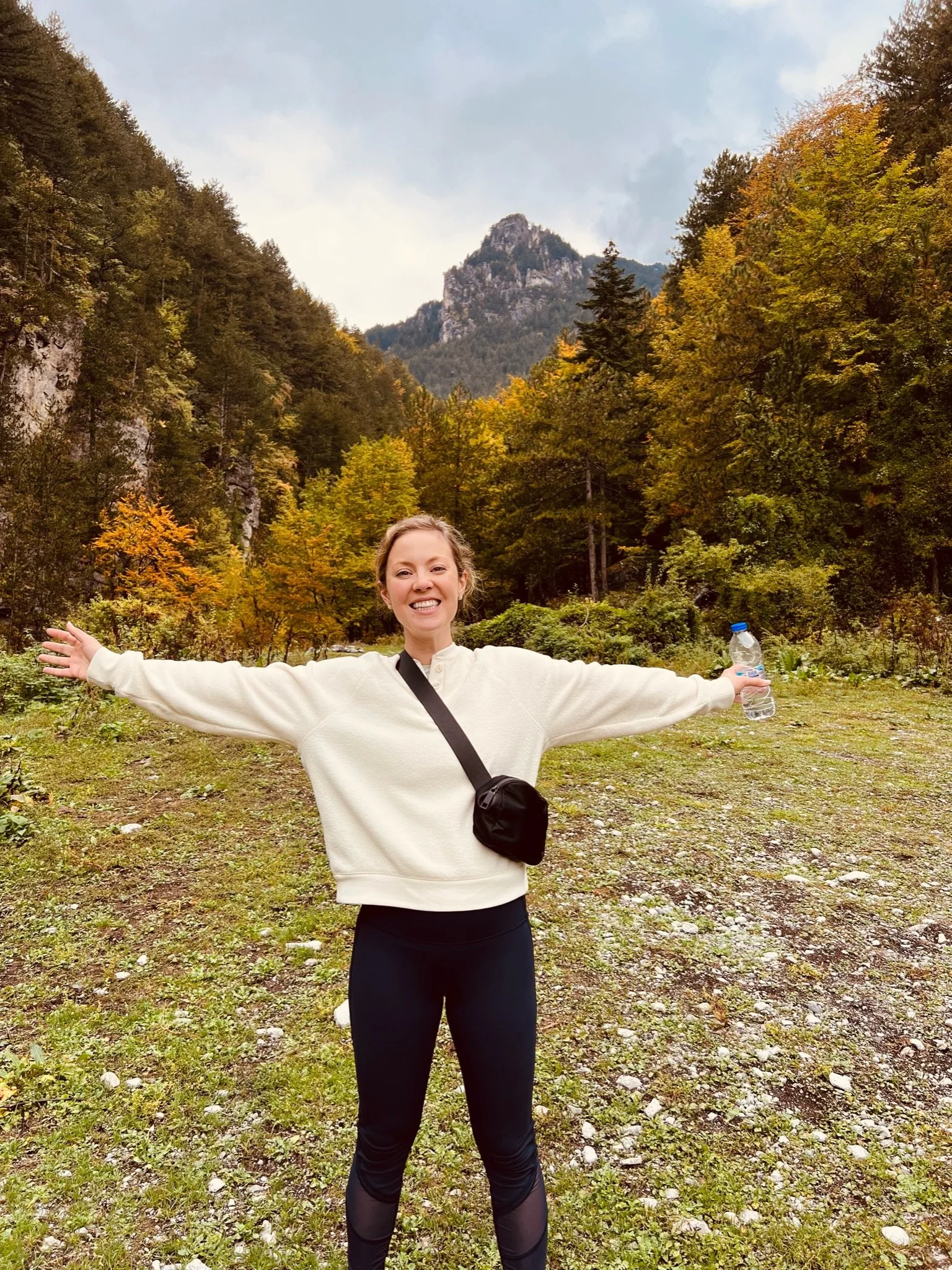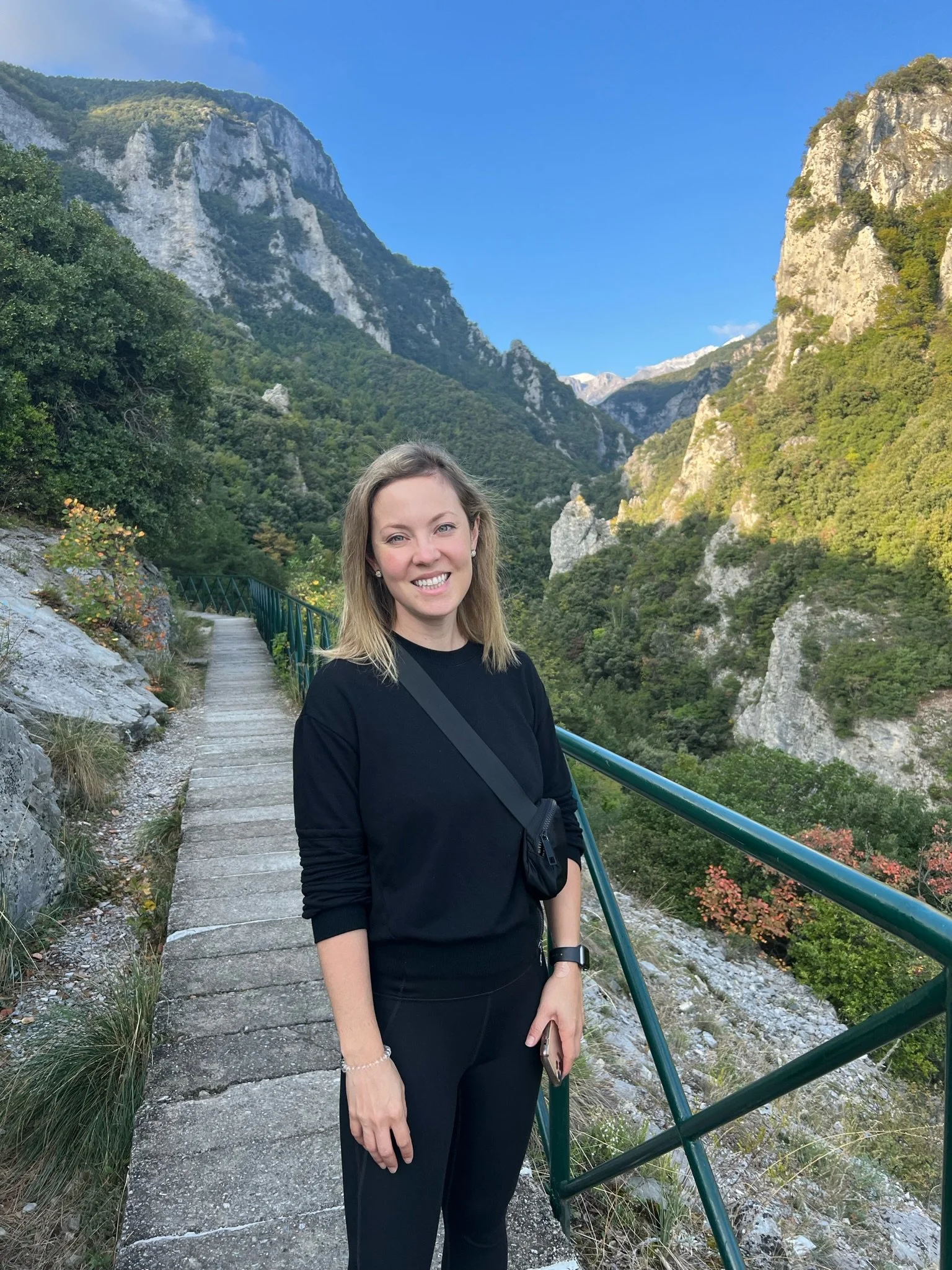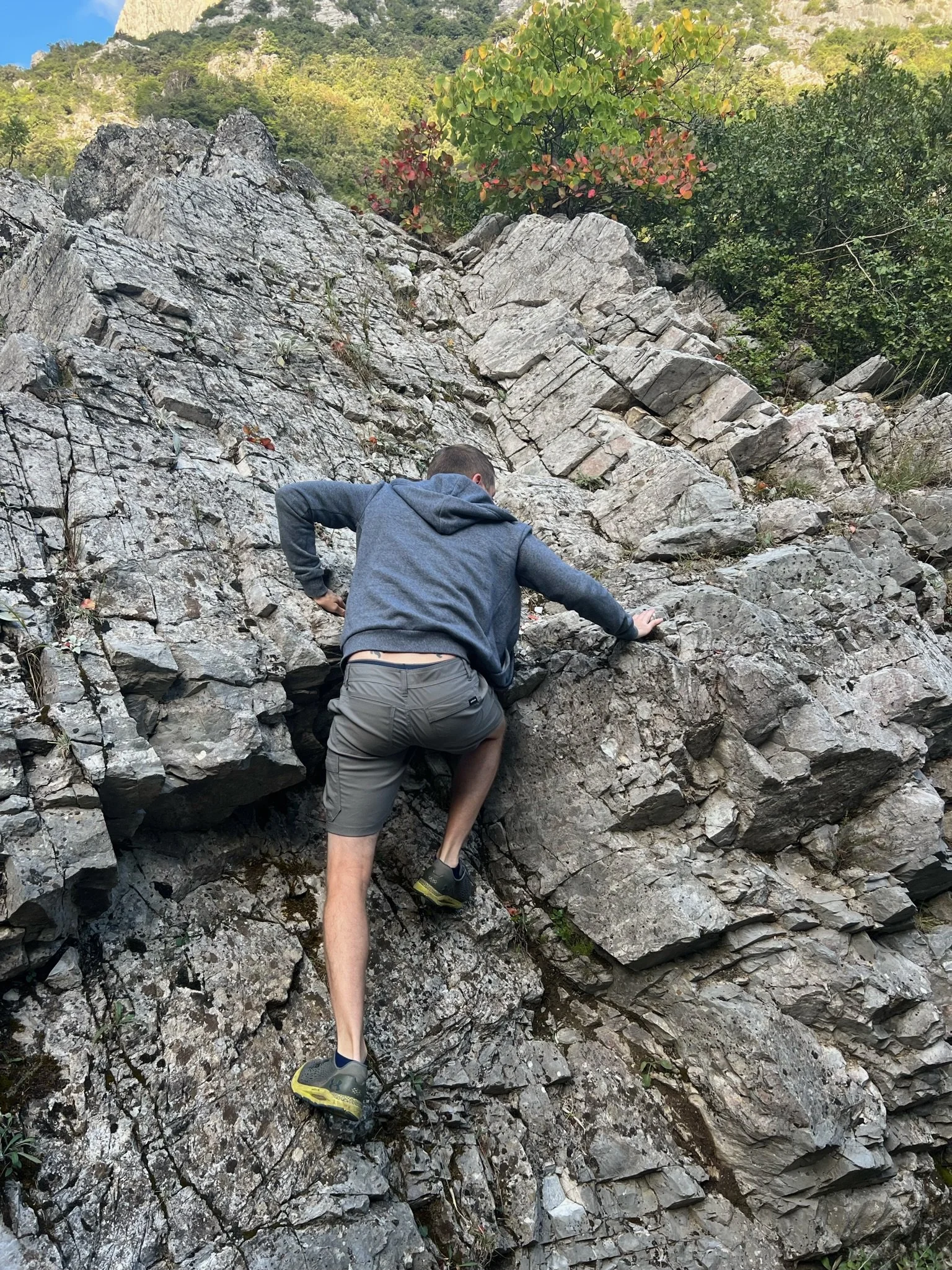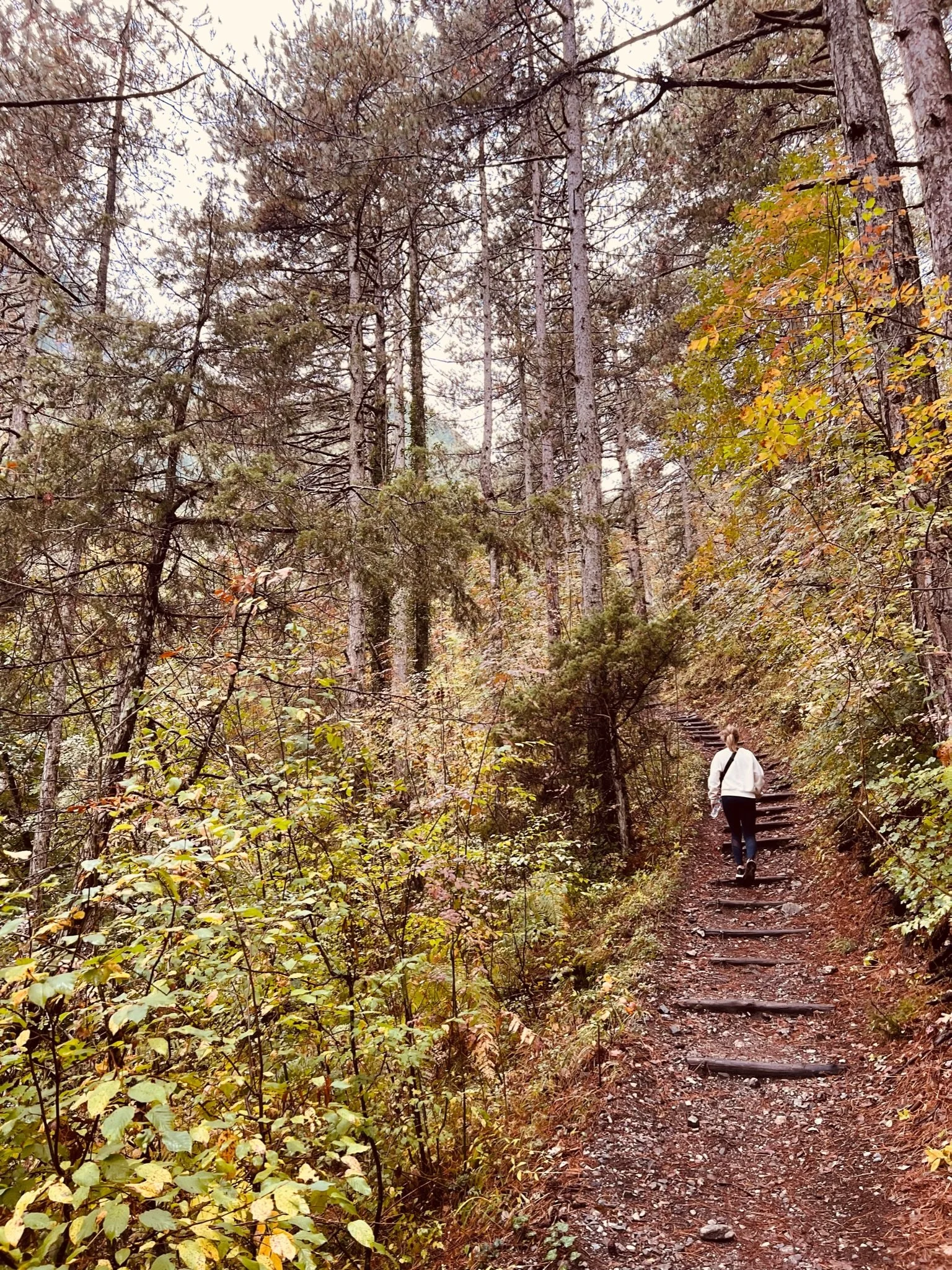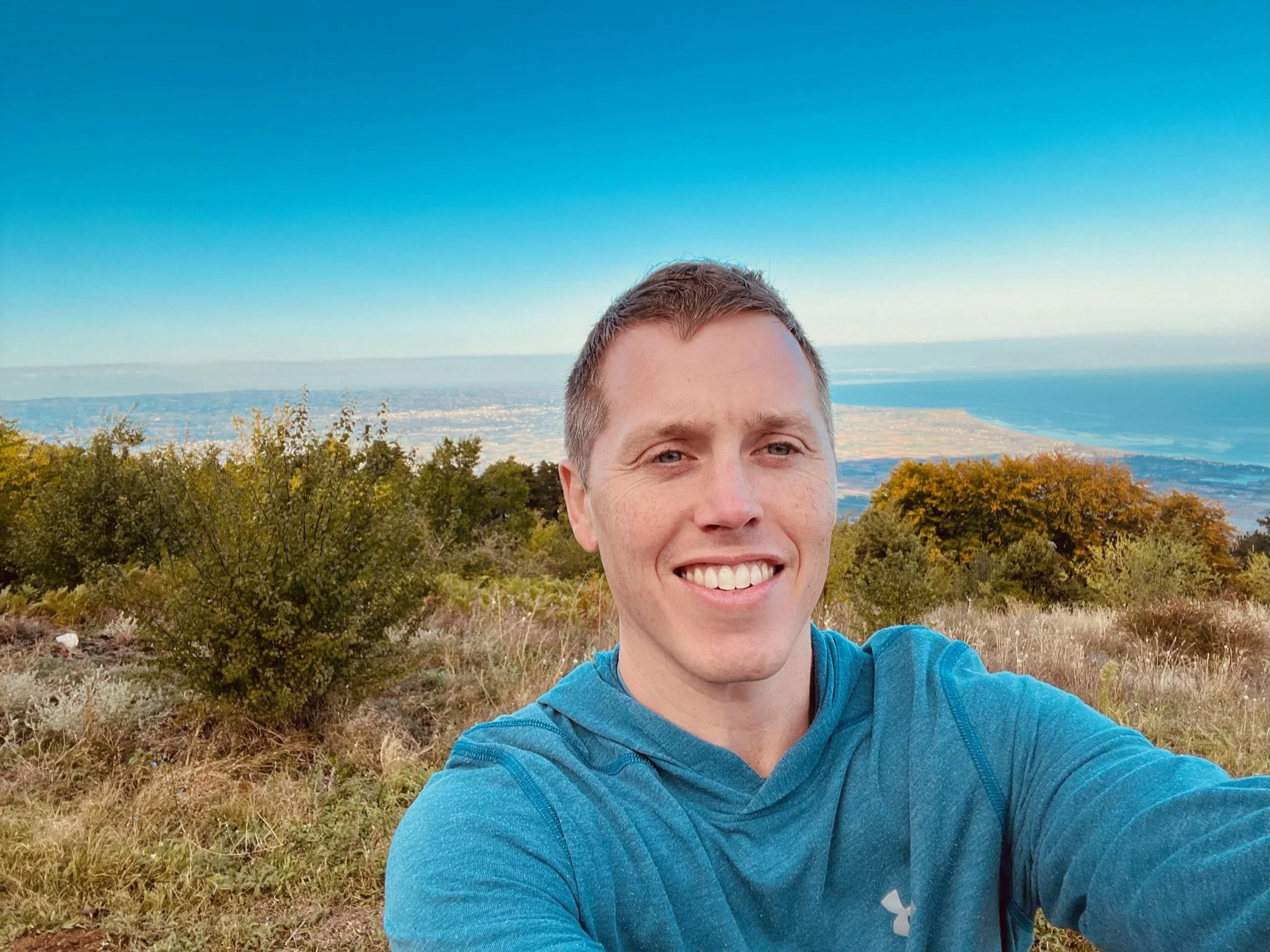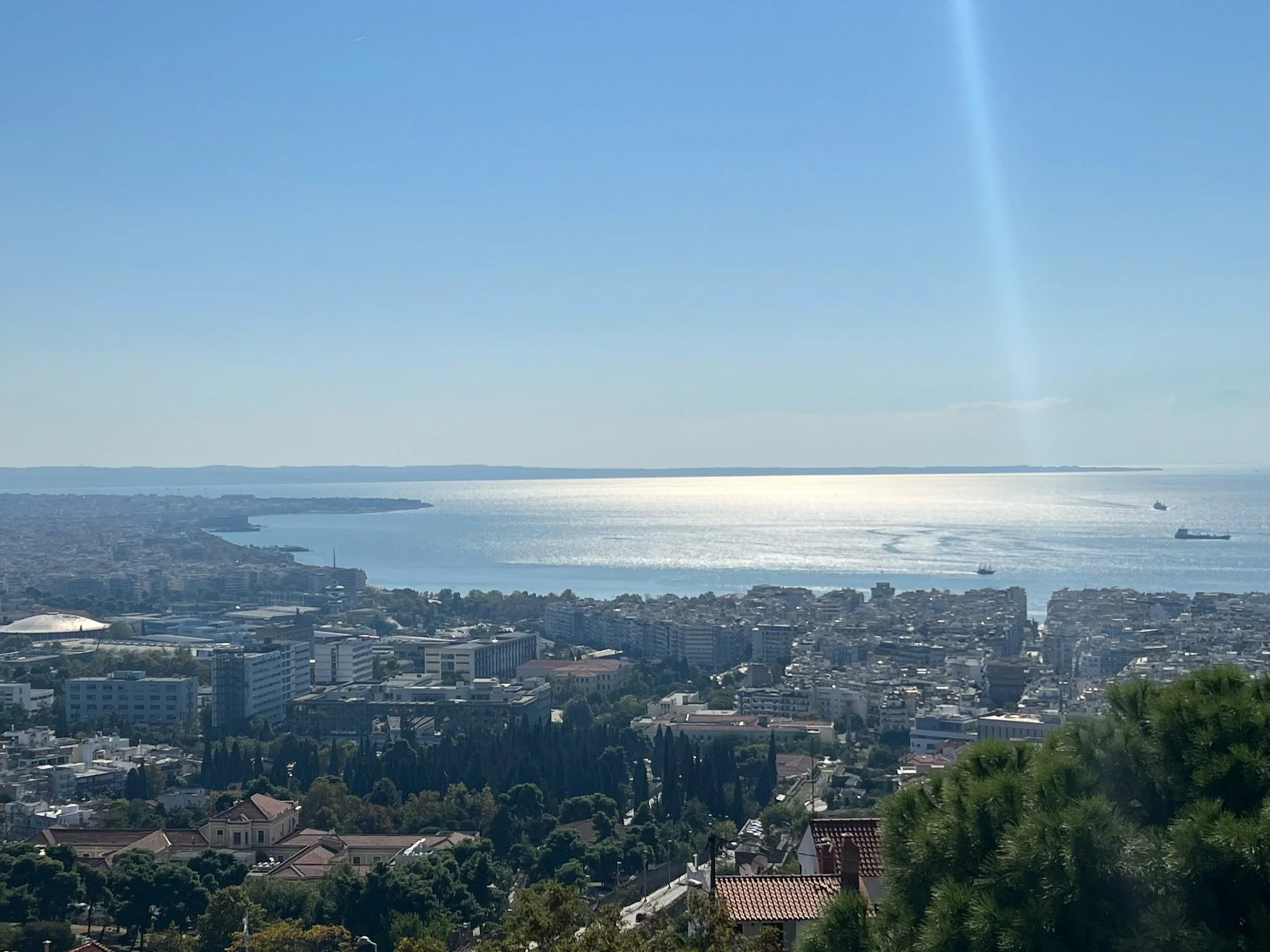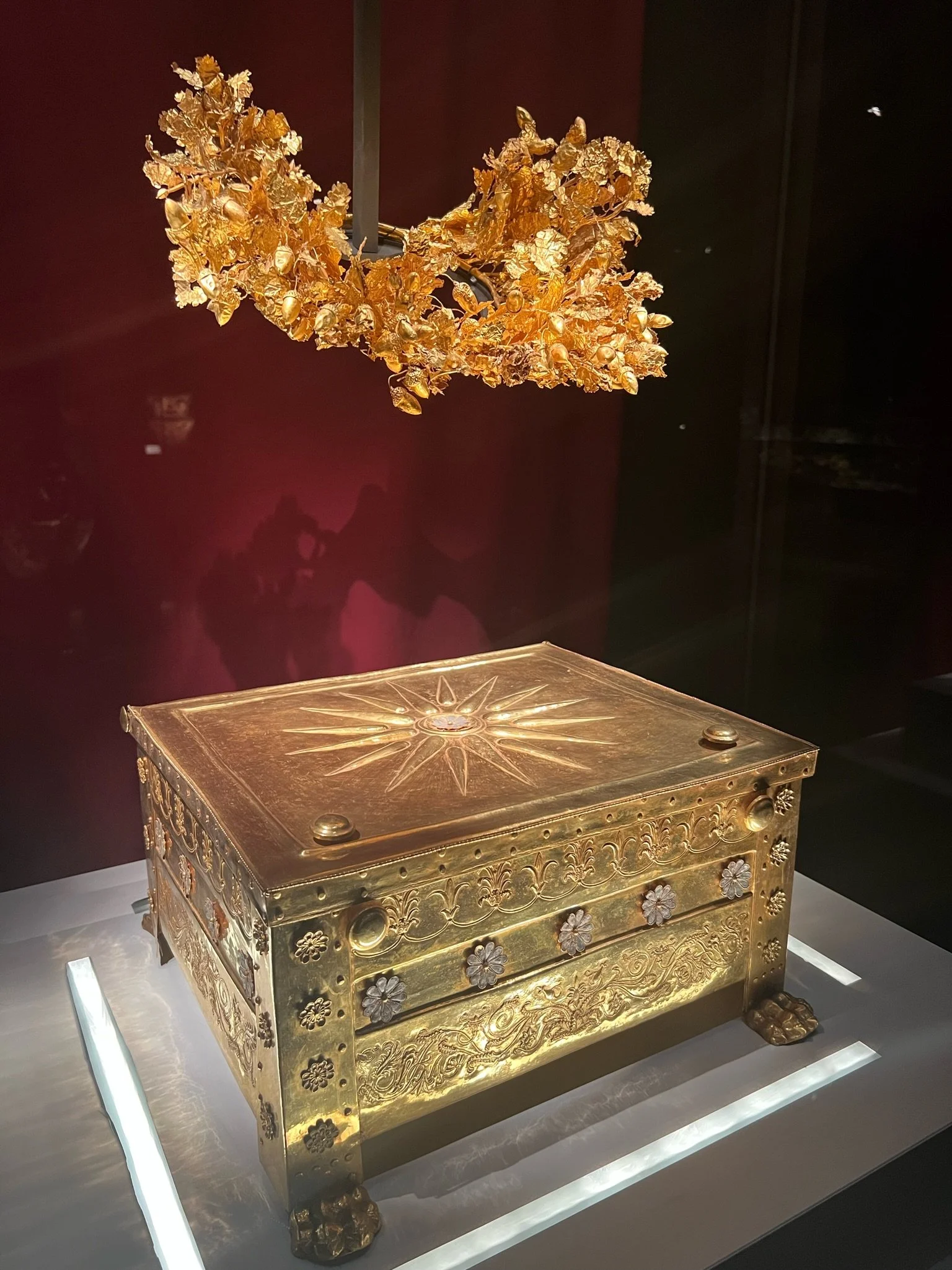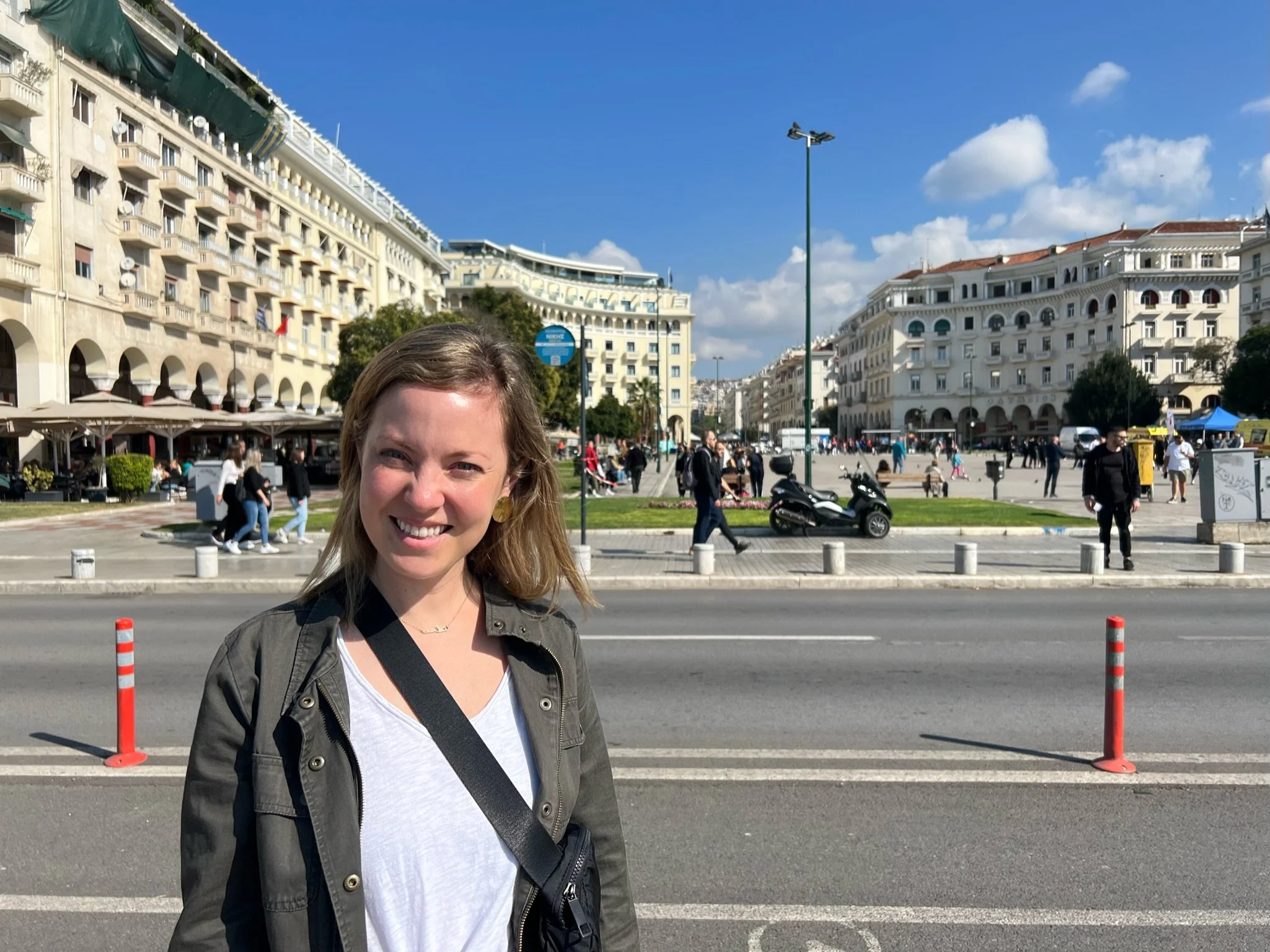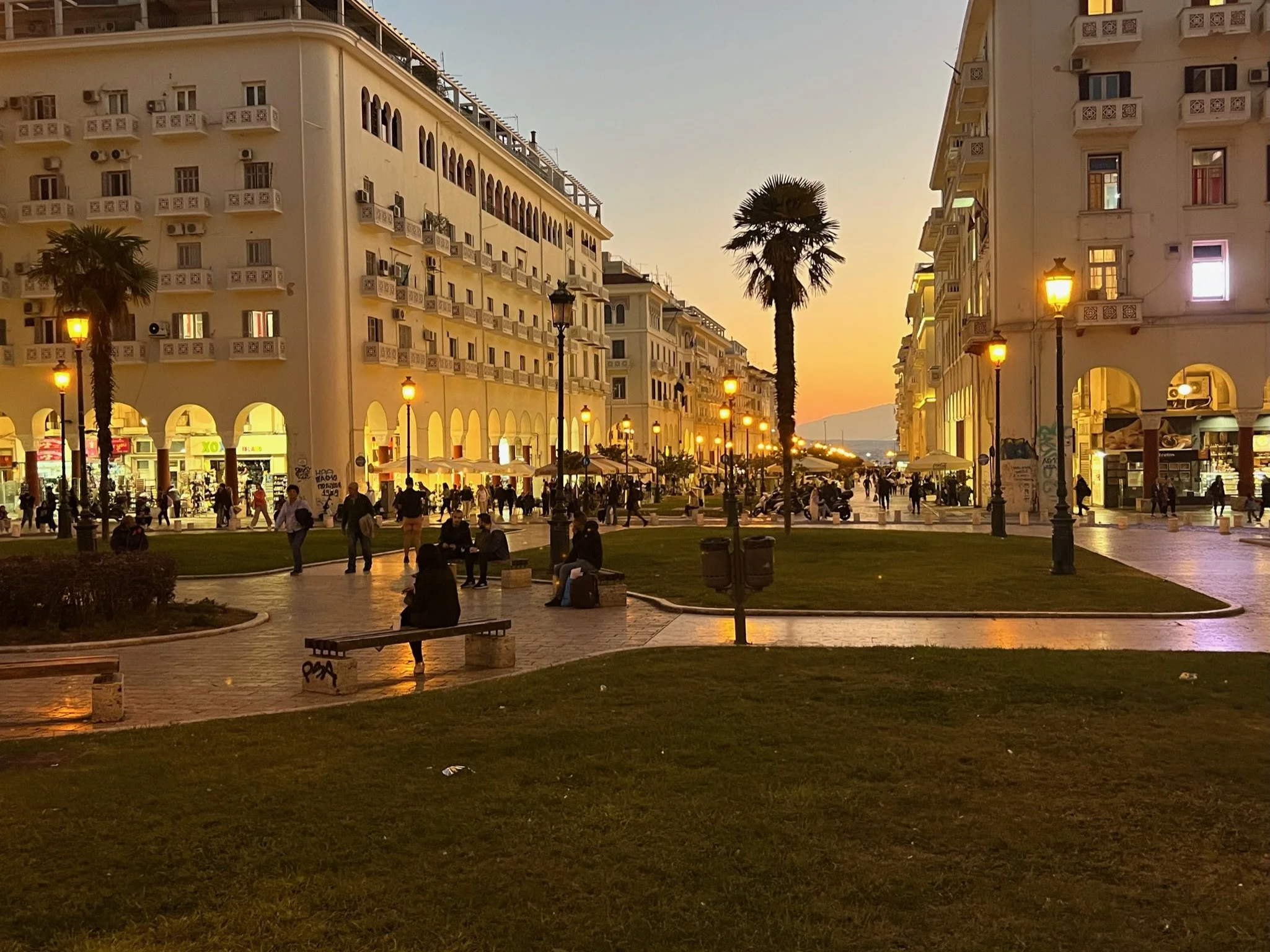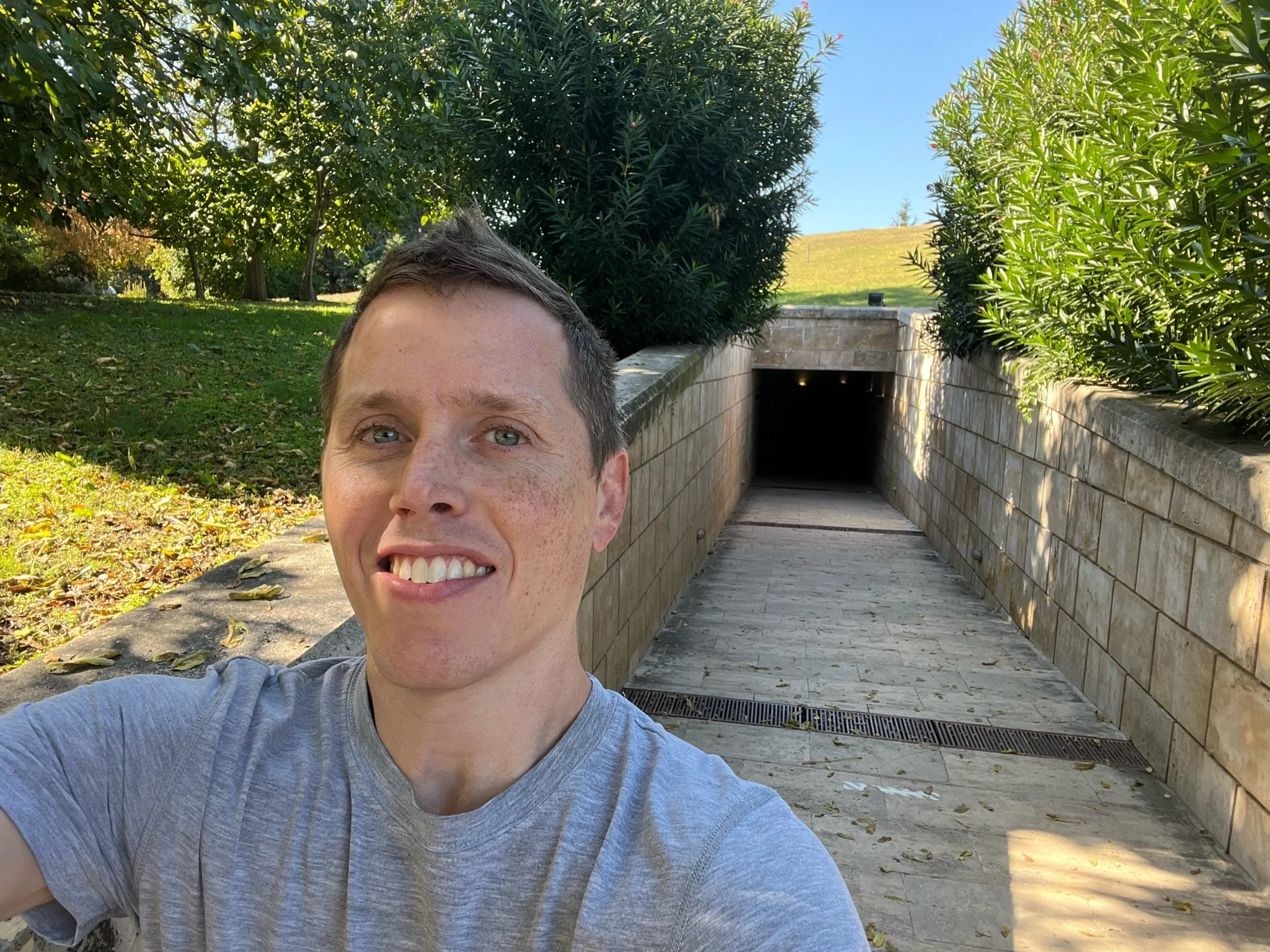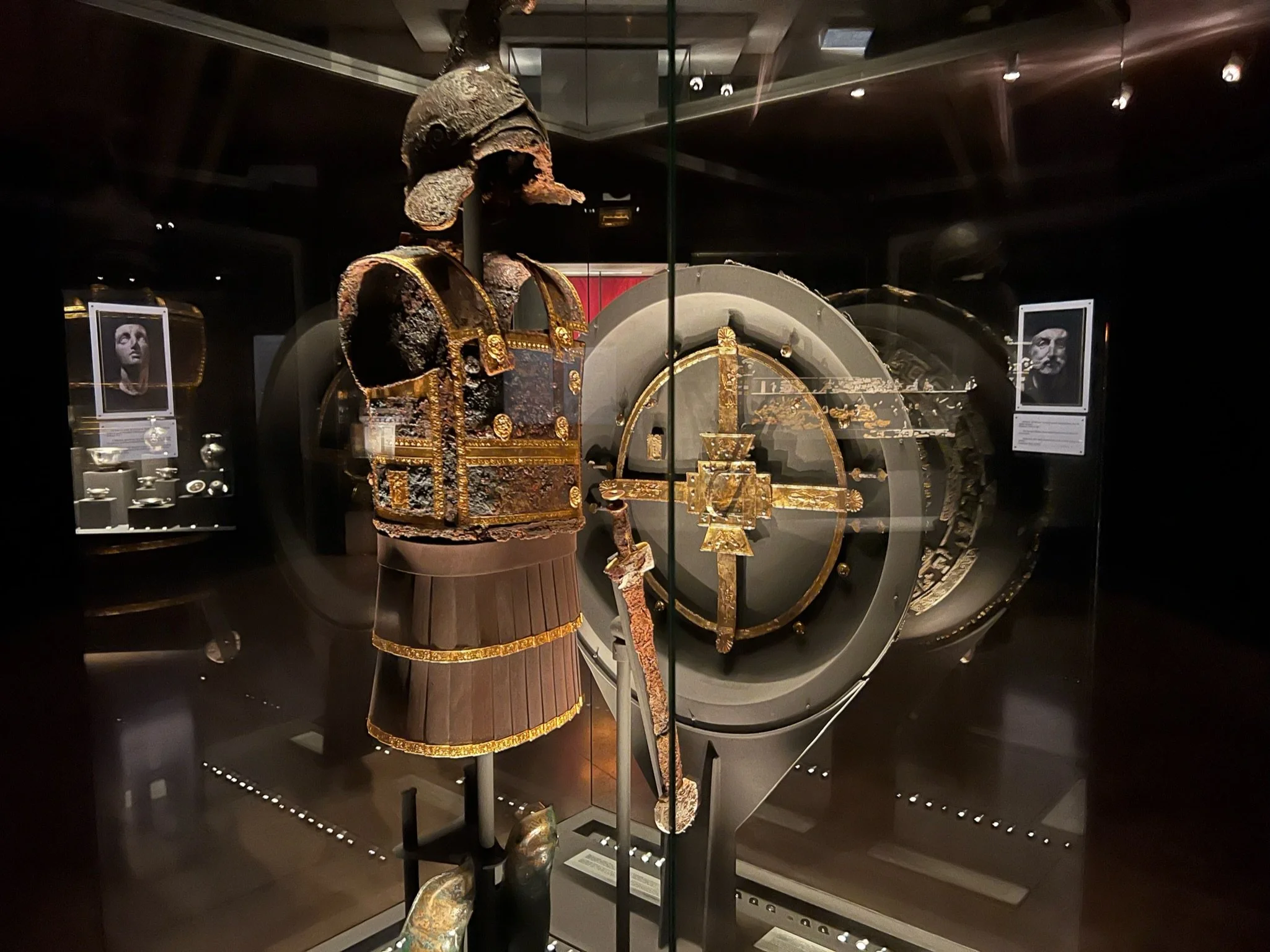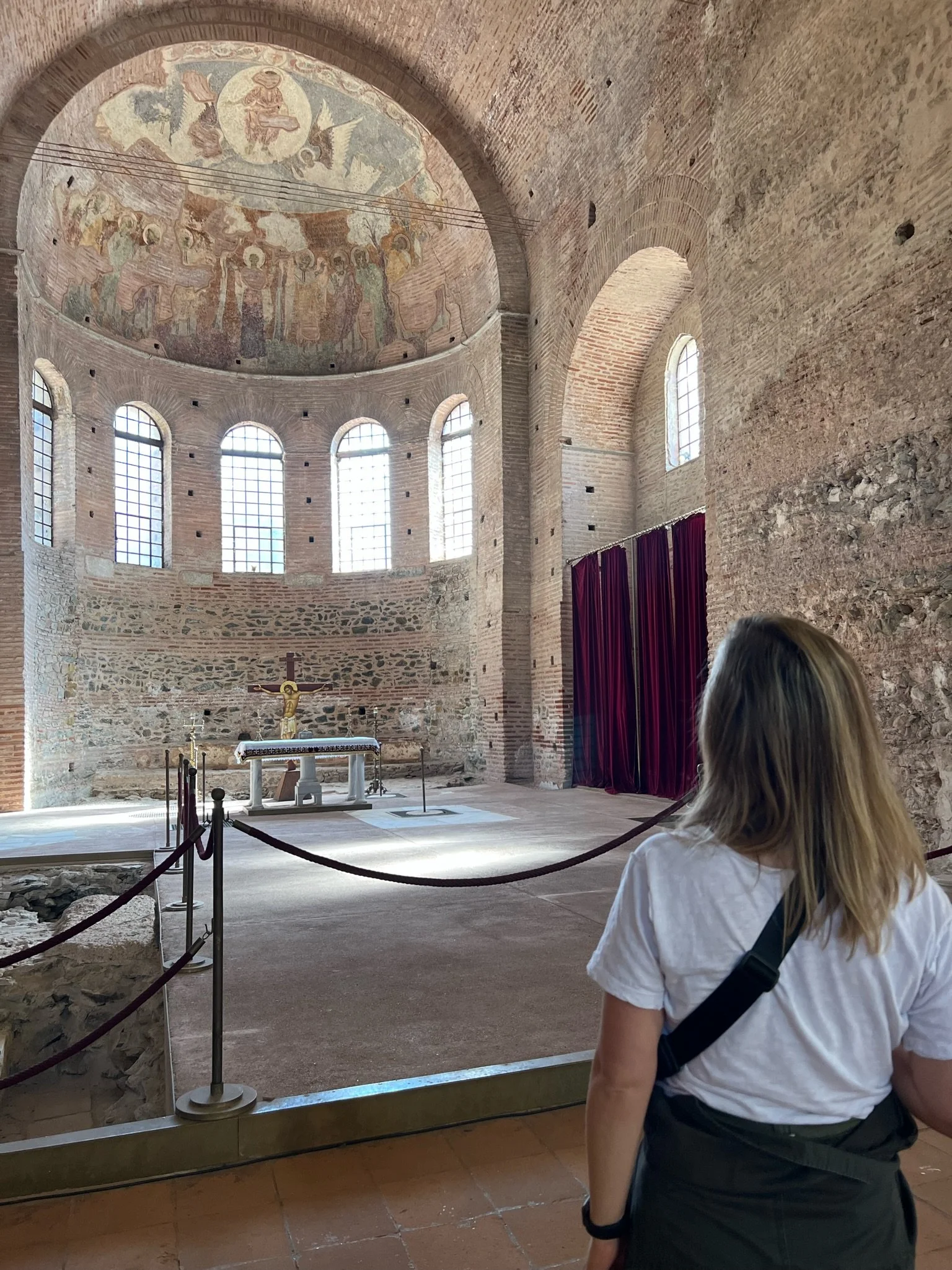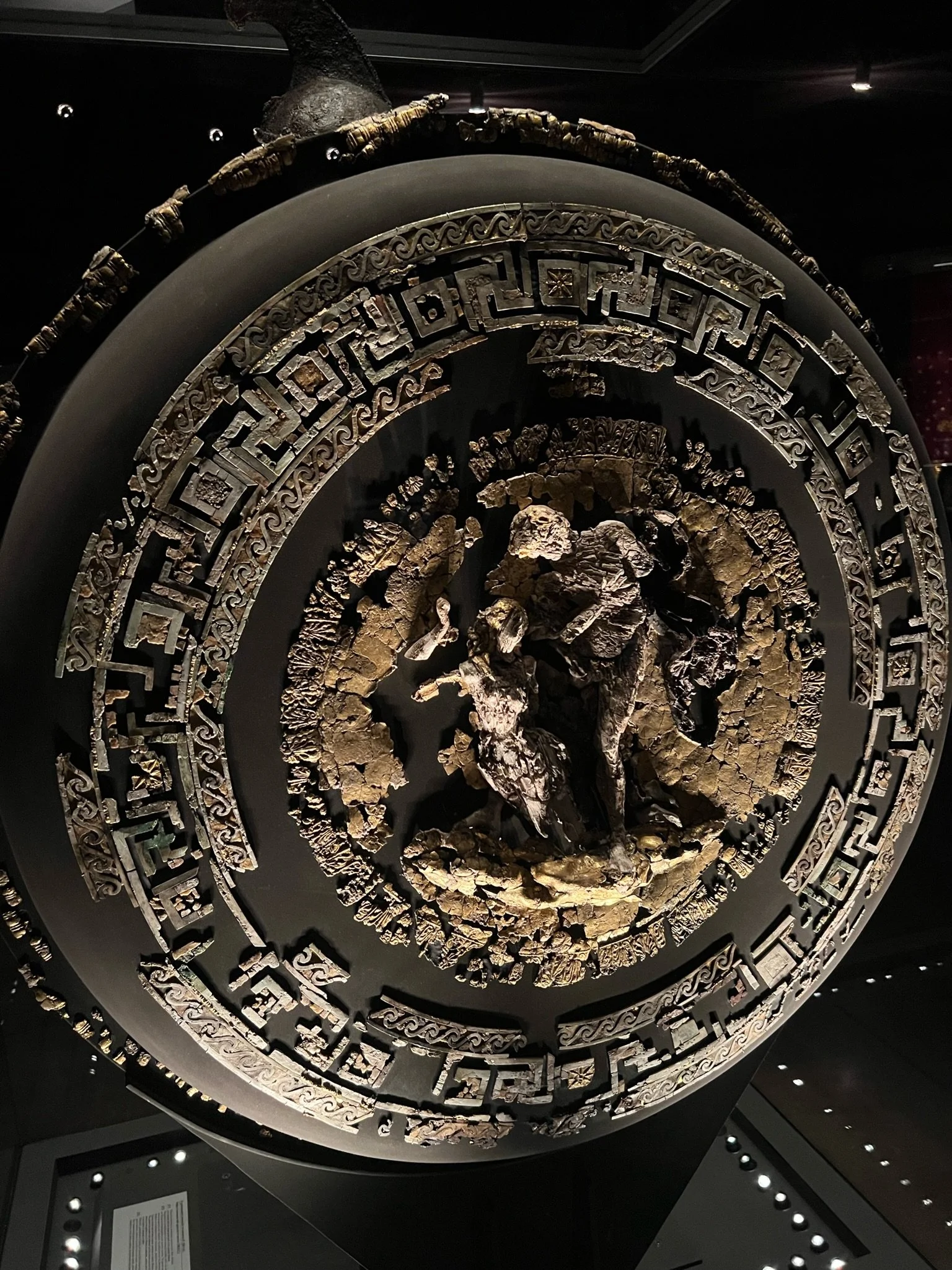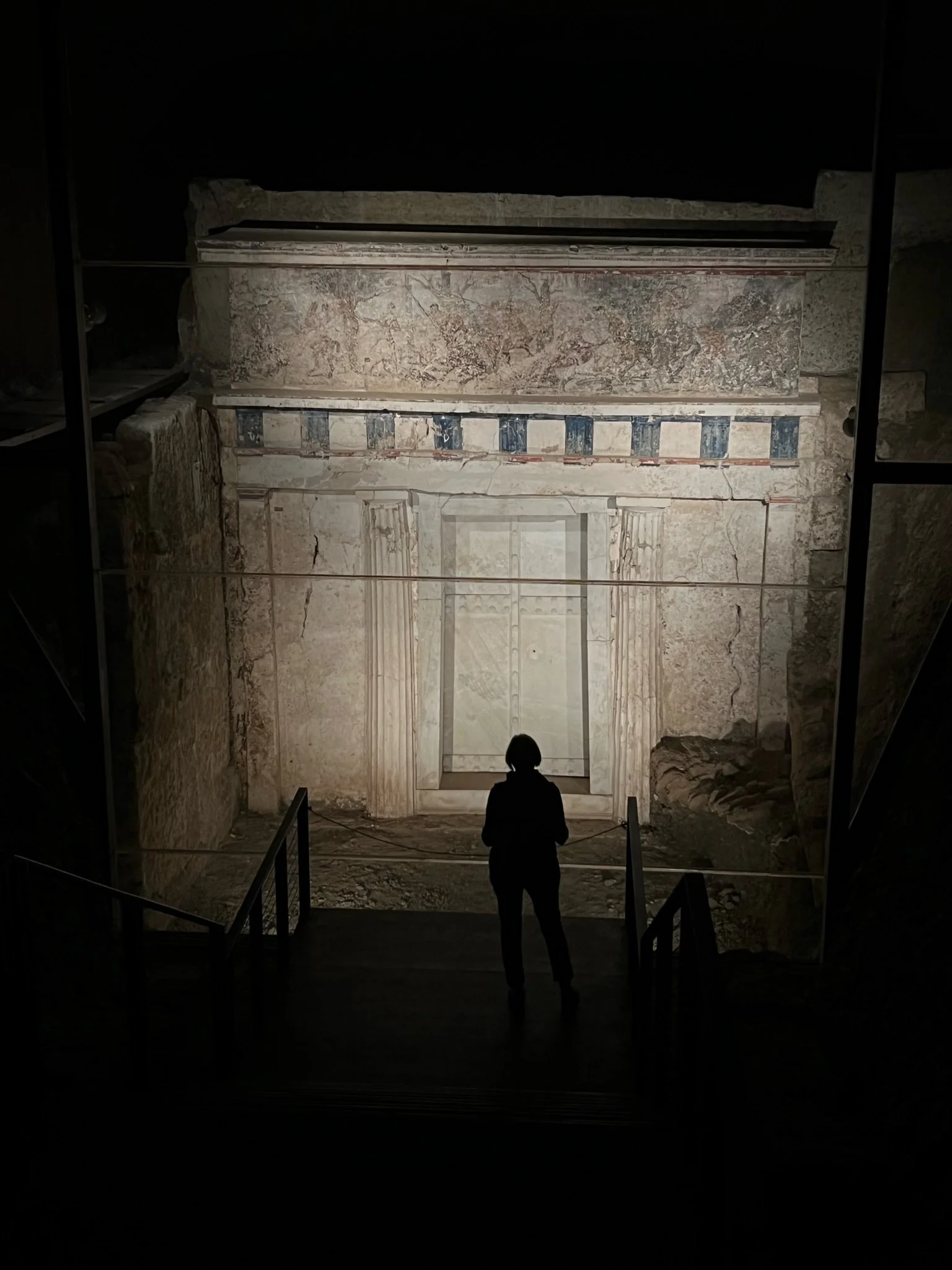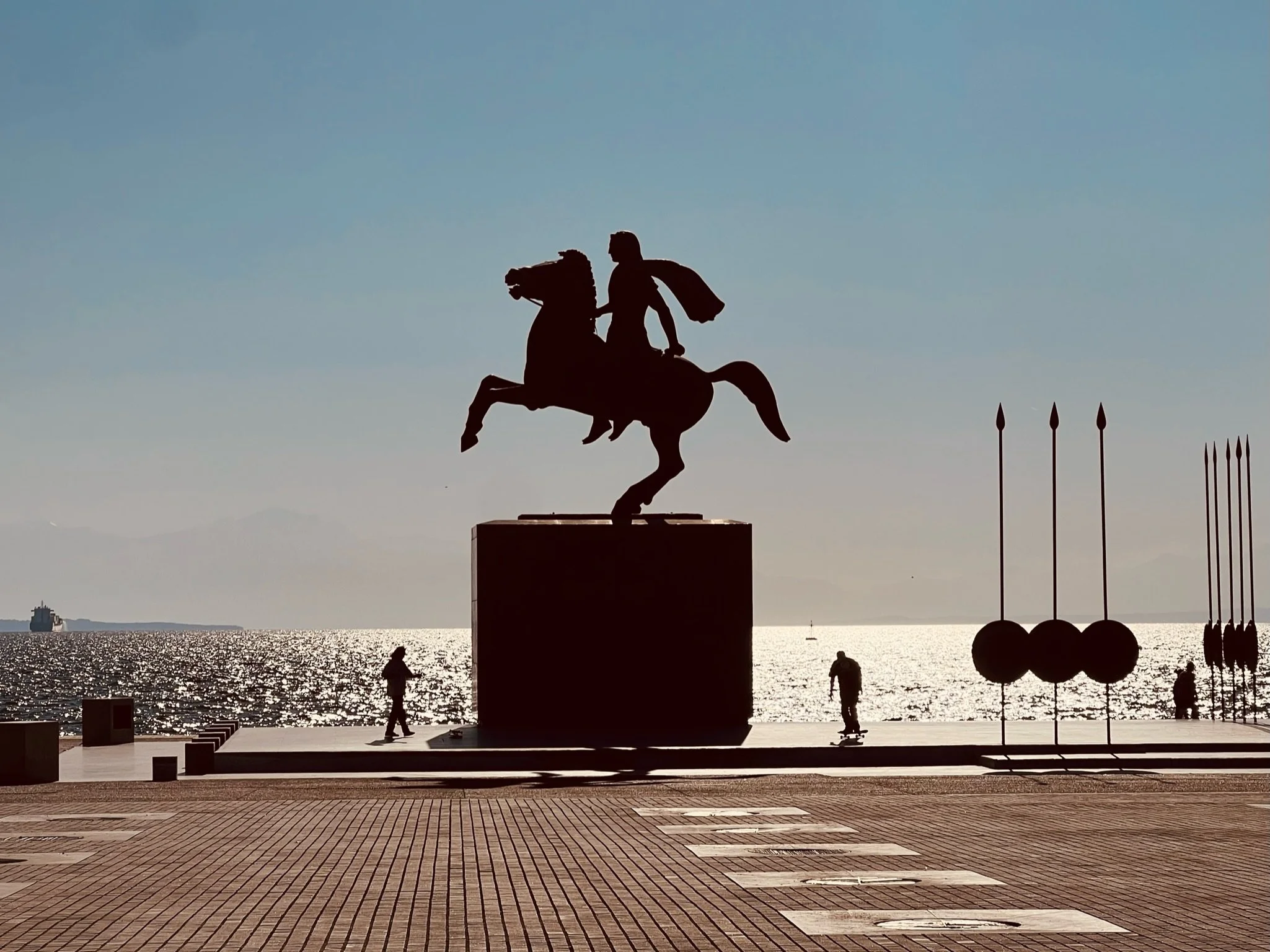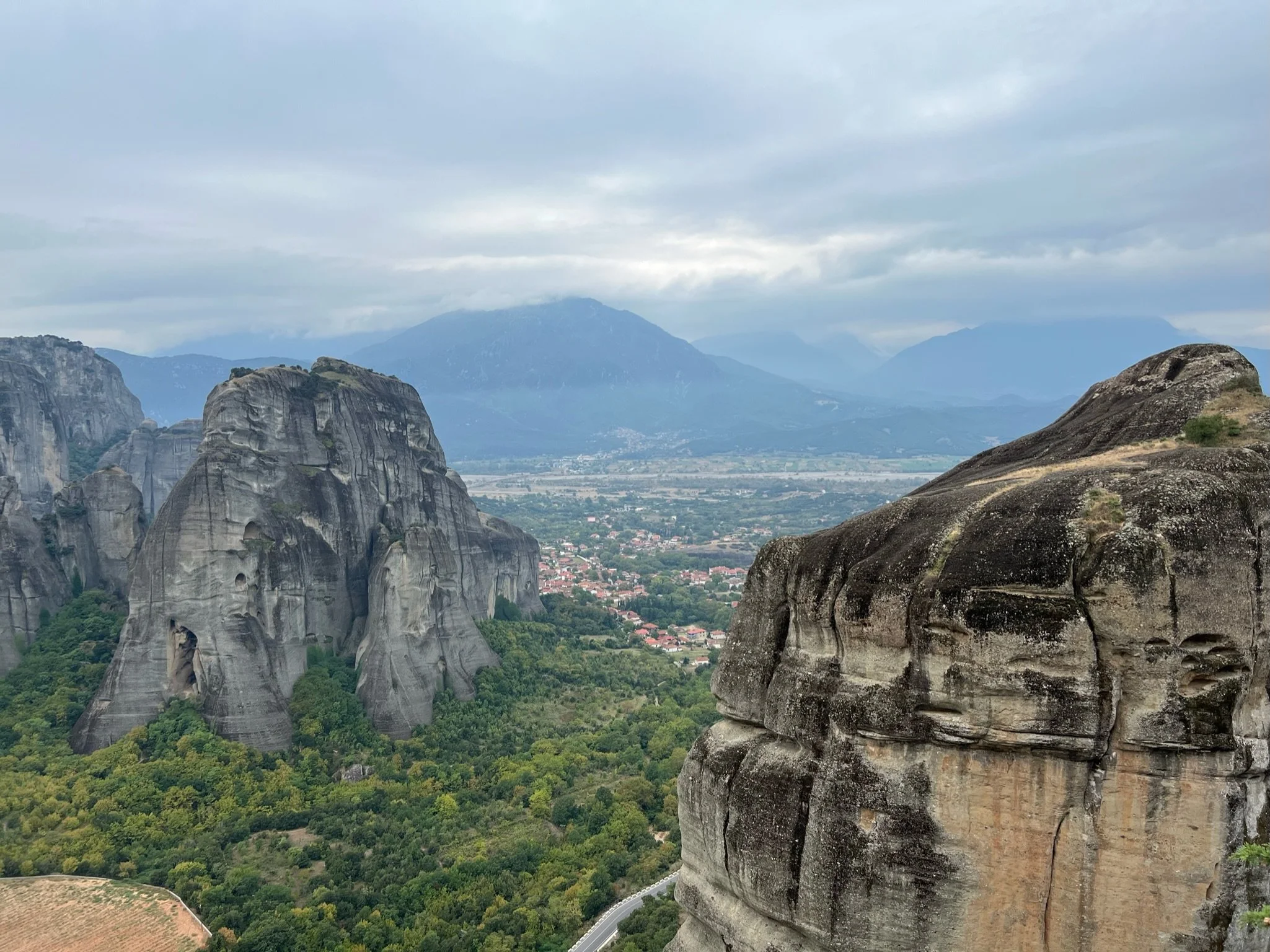
Road Trip in Greece
Notes & Photos
I’ve wanted to visit Greece since I started reading about its ancient history years ago, but between getting married, having a kid, COVID-19, changing jobs, etc. it kept getting put off. Finally, my wife Katy and I found a window to make it happen in October of 2022. A perfect way to celebrate our 5-year wedding anniversary while doing some historical exploration along the way.
Our initial plan was to have a nice, relaxing week on the Greek island of Santorini, known worldwide as one of the top romantic getaways. But when the idea of traveling through the mainland got into my head - and all of the possible sites we could see across Greece - we called an audible and decided to do a road trip instead.
Our Route
Our trip began in Athens and ended in Thessaloniki, the northern capital of Greece. Not including the flights, it lasted approximately 9 days. You can find our route map below, as well as photos, notes, and recommendations. Hopefully it is helpful to other travelers. If you have any questions, you’re always welcome to message me through the website.
Athens
Our trip began in Athens, where we spent one day and night. The capital and largest city in Greece today, Athens is also one of the most important historical cities in the world. It was the cultural heart of the so-called “Golden Age of Greece” (5th century BC), the city where most of the famous Greek philosophers (i.e. Socrates, Plato, Aristotle), historians (i.e. Herodotus, Thucydides), and playwrights (i.e. Euripides, Sophocles) made their mark. It is also the birthplace of the democratic form of government. For these reasons and others, ancient Athens is regarded as having a major role in shaping modern Western civilization.
We spent the day hiking to the top of the Acropolis (the hill at the center of the historical city) and to the Agora below it (the social center of ancient Athens) and exploring the countless examples of ancient buildings and monuments that still exist (to varying degrees) along the way.
Recommendation: Give yourself at least two days in Athens if possible. One day was enough to explore the most iconic Acropolis and Agora areas, but we didn’t have time to visit the museums and other historical sites in the city and nearby. Also, driving in the city can be tricky (very congested and narrow areas), so keep that in mind if you plan to rent a car…
Delphi
From Athens, we drove to the archaeological site of Delphi. One of the most sacred places in the ancient world, Delphi was home to an oracle (called Pythia) who offered divinely-inspired advice and prophecies to those who had the means to travel to her sanctuary.
Those who made the long journey (Delphi was not close to any major population center in ancient Greece) brought extravagant riches to honor the Oracle, leaving the hillside glittering with marble statues, gold, and other precious materials.
Recommendations: Give yourself plenty of time to explore here (at least 2-3 hours)! You will not want to skip the impressive museum on-site either, which features some of the most important archaeological findings from ancient Greece. The beautiful, remote setting of Delphi and the mysterious element of its history made this a major highlight of our trip.
meteora
After touring Delphi, we made a brief stop at the Memorial of Leonidas and the 300 Spartans who died fighting the Persians at Thermopylae. This is really just a statue right next to the expressway and a stone panel on a hill next to it.
Then we drove straight to Meteora, a rock formation in central Greece that is home to some of the world’s most stunning architecture. In the 13th and 14th centuries AD, Eastern Orthodox monks constructed elaborate monasteries atop the rocky peaks of this area, which made them especially remote and difficult to reach. Today, six of the original 24 monasteries are still intact and functional. One was even used as a setting in a James Bond film.
Recommendations: If you want to visit all six of the monasteries in the same day (its possible as long as you’re willing to walk up a lot of stairs), make sure to check their individual schedules so you can plan accordingly.
Also, most people opt to stay the night in the largest nearby town, Kalabaka. But there’s a smaller, more quaint town nestled closer to the rock formations called Kastraki. We stayed at the Pyrgos Adrachti and had dinner at the Taverna Gardenia and highly recommend both.
pelion
Next we drove to the Pelion, a mountain that is situated along the east coast of central Greece. Known as the “mountain of the centaurs”, Pelion played an important role in Greek mythology: it is where the wise centaur Chiron taught many of the most important heroes, including Achilles, Heracles, Jason, Theseus, Aeschylus, and others. The twelve Olympian gods were said to spend their summers on Pelion and the wedding of Peleus and Thetis (the parents of Achilles) was held there as well, an event which played a role in sparking the conflict behind the Trojan War.
The unique natural beauty of Pelion - full of lush forests, hidden beach coves, and the occasional cave - give it a very mysterious vibe. Full of secrets. It is easy to see why the ancient Greeks associated Pelion with so many mythological personalities and events. There is not much archaeology to be seen on Pelion, but there are a collection of very small traditional Greek villages throughout the mountain that contain many centuries of history. Today, Pelion is a popular summer getaway spot for Greeks, as well as residents of other countries in Europe and the Middle East.
Highlights of our time in Pelion included visiting the beaches on the eastern side of the mountain (including the one featured in the film Mamma Mia!) and hiking to the cave that some scholars believe was the actual residence of the historical figure behind the myth of Chiron.
Recommendations: Our hotel, the Sakali Mansion, was excellent; it was centrally located to both sides of the mountain and the owners/managers offered very helpful advice for our daily itineraries. The entire area was very beautiful, but it was clearly off season in October. I’d estimate 50-75% of the shops and restaurants were closed most of the time we were there, so if you want a more vibrant experience in the villages you should consider visiting in the summer season.
The standout restaurants we visited were Krista in Portaria and Salkimi in Milies. Also, you will want a quality rental car that is good on hillsides and bumpy terrain if you plan to explore the region. I can’t imagine relying on a taxi, bus, or compact “smart car” to get around in Pelion.
mount olympus
On our way north, we took a day to stop at the home of the Olympian gods. In the morning we went to the archaeological site of Dion, a holy city of the ancient Macedonians where Alexander the Great and many others paid homage to the gods. In the afternoon, we drove from our hotel in the town of Litochoro to the highest point they allow cars on Olympus. Then we took a hike around the Enipeas Gorge, one of the prominent features of the mountain.
Recommendations: Dion is quite extensive and there is a museum (which we missed because we didn’t know about it!), so give yourself at least a few hours there. Also, the paved walking path found at the top outskirts of Litochoro is a great way to get some quality views of Olympus. The Robolo Boutique Hotel in Litochoro was excellent all around.
Thessaloniki
The last stop on our trip was Thessaloniki, the northern capital of Greece. It is a beautiful city (reminded us of Rome if it were on the coast) situated on the Thermaic Gulf of the Aegean Sea. There are historic sites scattered throughout Thessaloniki, spanning the eras of the Roman, Byzantine, and Ottoman Empires.
We visited multiple Roman ruins and Byzantine cathedrals, and took the long stroll through Aristotelous Square (the city’s central square) and along the bay to the Monument of Alexander the Great. This is a perfect way to experience the spirit of the city and see many of its restaurants, bars, and shops.
There are also prominent ancient archaeological sites outside of Thessaloniki, including the ancient capitals of the Macedonian Empire - Pella and Aigai. Although there isn’t much to see at Pella, which was largely destroyed in an earthquake (Dion is more intact), the museum at the royal necropolis at Aigai is very impressive. It is underground, built into the hillside mound of the original tomb site, and you can see the armor and artifacts found in the intact tomb of Phillip II (Alexander the Great’s father). Our guide described the finding of this intact tomb in the 1970’s as Greece’s equivalent of opening King Tut’s tomb.
Recommendations: You will need two days to see both the prominent sites in Thessaloniki and the major ancient archaeological sites of Pella and Vergina. The Caravan Bed and Breakfast is a good place to stay if you want to be centrally located and in a fun atmosphere with a lot of travelers coming and going. The restaurant at the Daios Hotel is a good spot for dinner by the sea. Also, for the best view of Thessaloniki, hike up to the castle that overlooks the city.
